Scandinavian living rooms are defined by a harmonious blend of simplicity, functionality, and cozy warmth. Central to the style is a neutral color palette—predominantly whites, beiges, and pale grays—paired with natural wood tones to create an airy, uncluttered backdrop. Maximizing natural light through large, unobstructed windows and minimal window treatments enhances the feeling of openness and connection to the outdoors. Textural layering—such as wool rugs, knit throws, and linen cushions—adds depth and comfort without compromising the minimalist ethos. Thoughtful accents like curved silhouettes, black detailing, or a single statement wall introduce visual interest while preserving cohesion. Finally, the Danish concept of hygge—invoking warmth and well-being through candles, soft lighting, and curated décor—ensures that Scandinavian spaces feel inviting, not stark.
1. Embrace a Neutral Color Palette
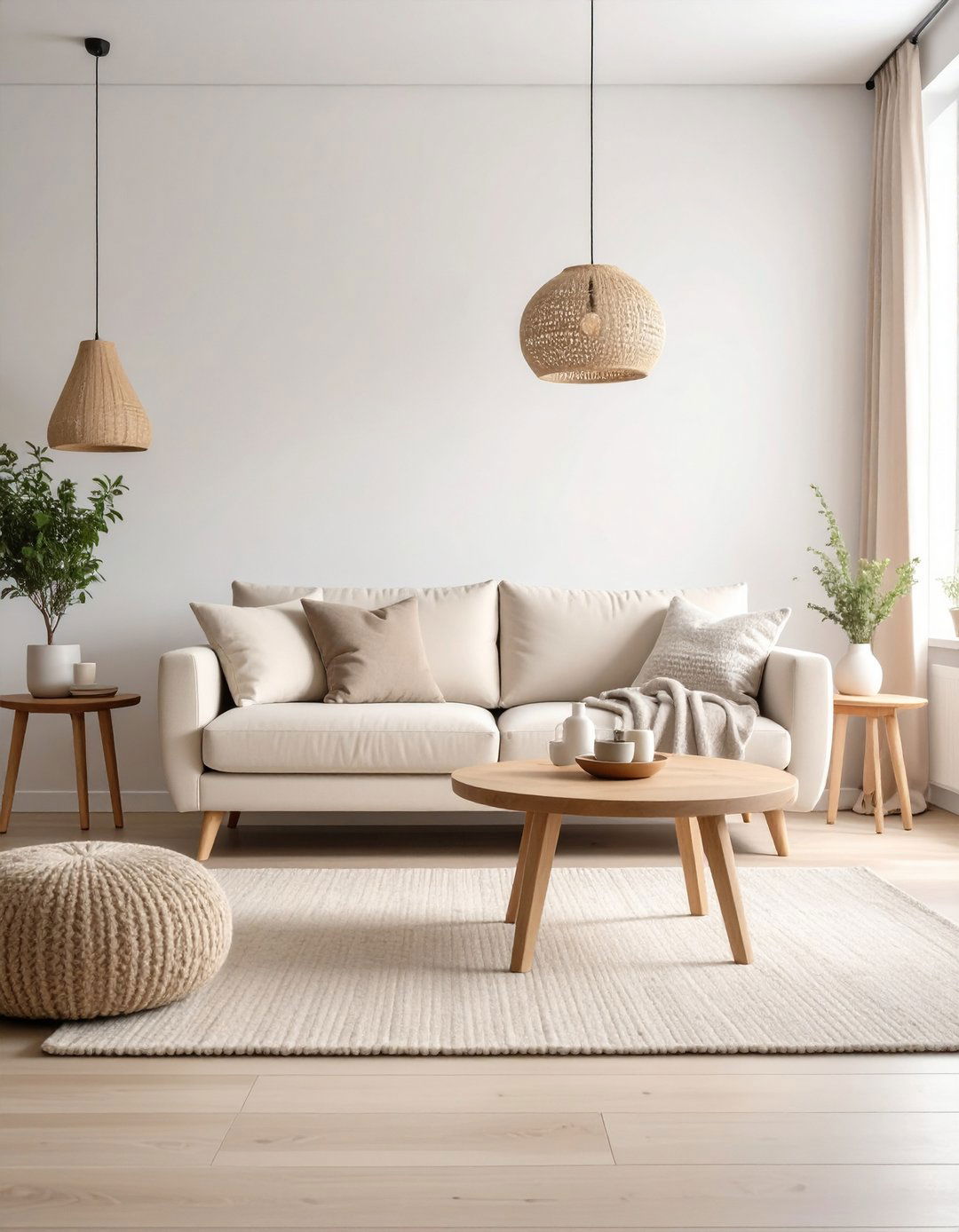
A hallmark of Scandinavian living rooms is the restrained use of color. Walls are typically painted in shades of white—ranging from crisp, bright whites to softer ivory tones—which provide a serene backdrop for furnishings and décor. Neutral sofas and armchairs in beige or light gray further underscore the minimalist vibe, allowing accent pieces—like a muted pastel throw or a natural jute rug—to stand out without overwhelming the space.
2. Integrate Natural Wood Elements
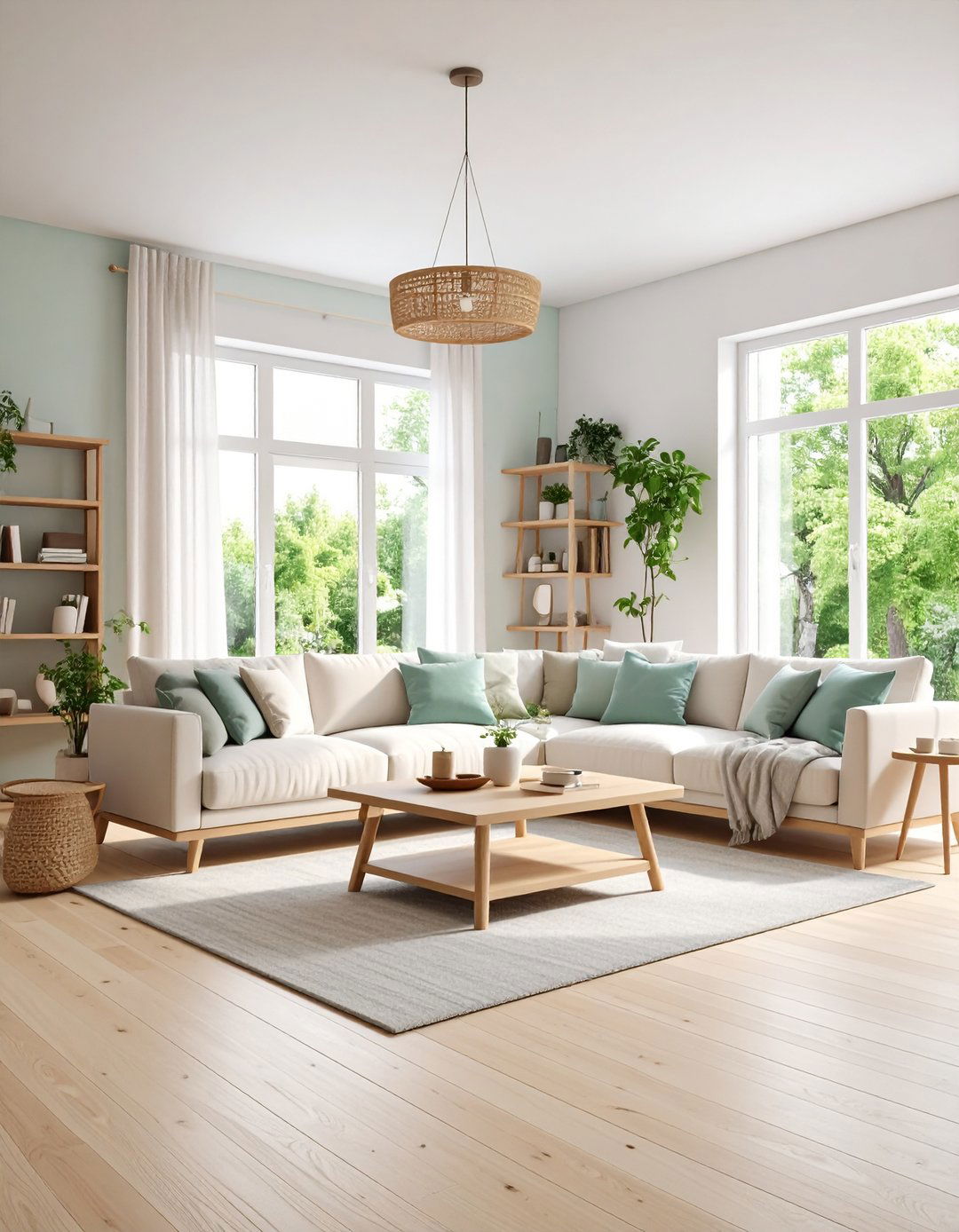
Light woods, such as birch or beech, are indispensable in Scandinavian interiors. Flooring, coffee tables, and shelving built from pale timber introduce organic warmth and texture, preventing the predominantly white space from feeling sterile. Wood grains add subtle pattern and character, while also reinforcing the style’s emphasis on craftsmanship and quality materials.
3. Maximize Natural Light
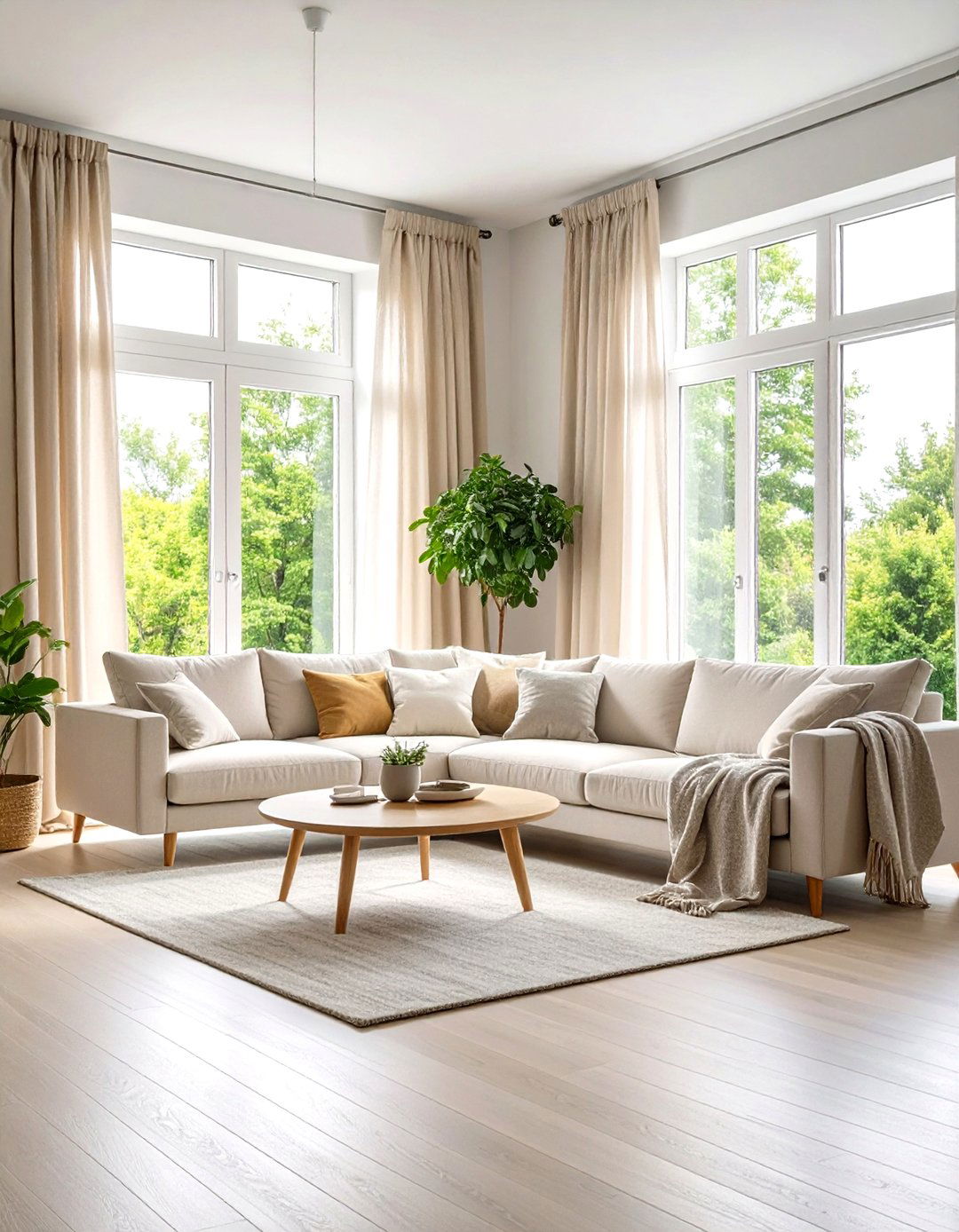
Large, unobstructed windows are essential to capture as much daylight as possible—a tribute to the long Scandinavian winters and the value placed on sunlight. Minimal window treatments, such as sheer linen curtains or simple roller blinds, ensure privacy without sacrificing brightness. Strategic mirror placement opposite windows can further amplify light throughout the room.
4. Layer Textures for Depth

Although the palette remains neutral, texture plays a critical role in creating a cozy atmosphere. Wool rugs, faux-fur throws, and chunky knit blankets introduce tactile contrast to smooth surfaces like painted walls or sleek upholstery. Linen or cotton cushions in varying weaves add subtle interest, making the room feel lived-in and inviting.
5. Introduce Greenery
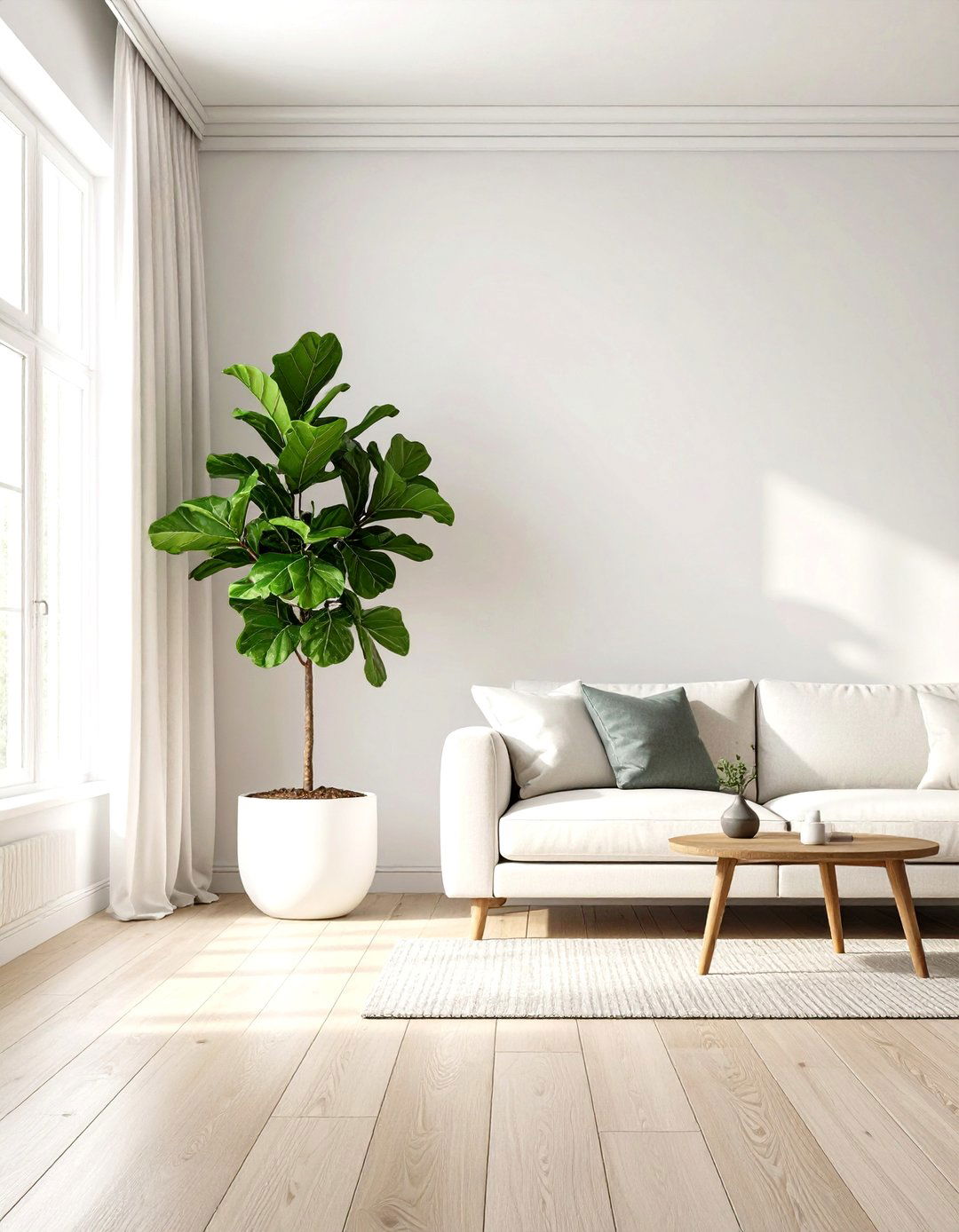
Houseplants and fresh flowers bring life and color into Scandinavian living rooms. Simple planters—often in white ceramic or natural clay—complement the minimal décor while connecting indoor spaces to nature. From a sculptural fiddle-leaf fig in the corner to a row of potted herbs on a windowsill, greenery softens the aesthetic and improves air quality.
6. Curate Functional, Multipurpose Furniture
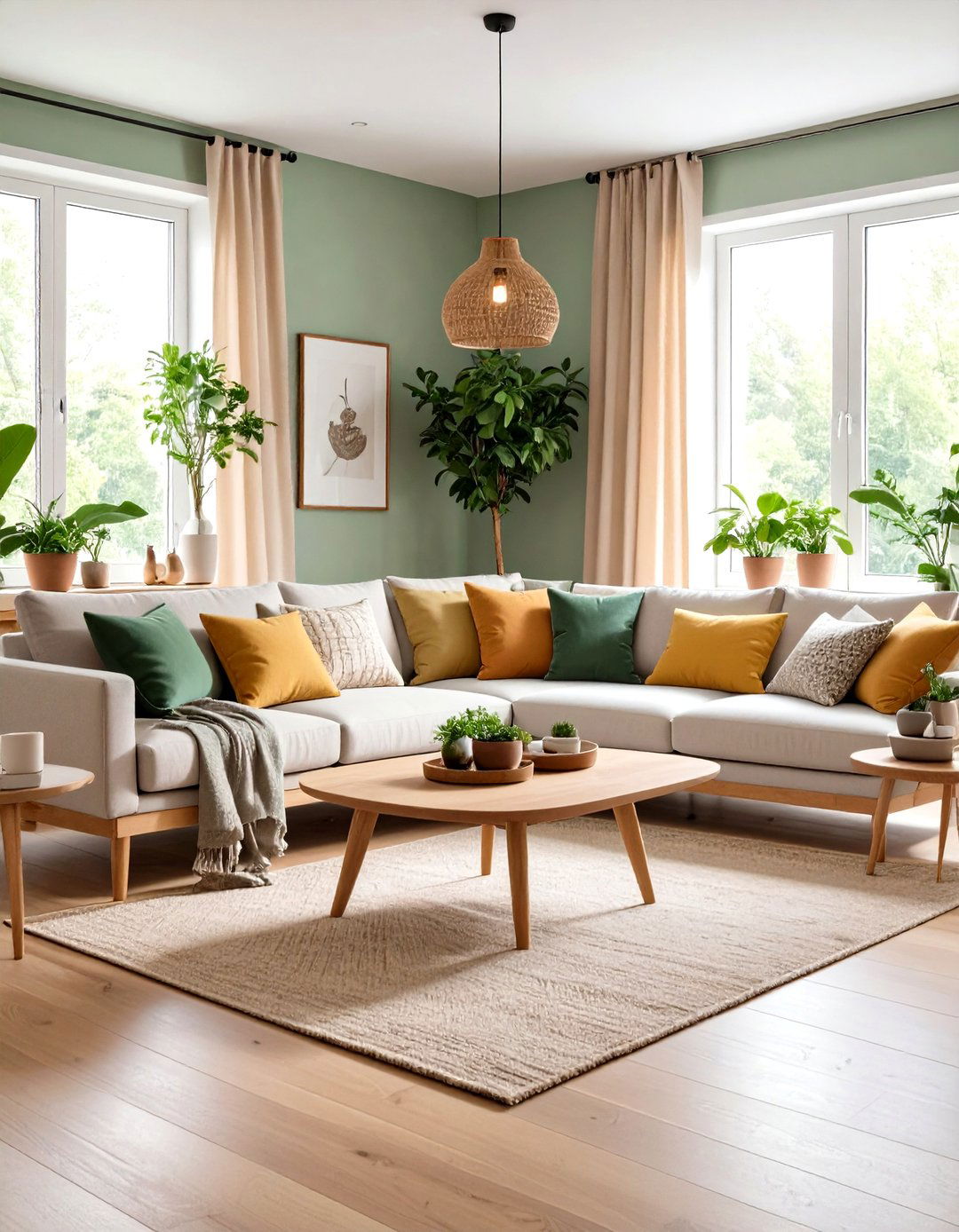
Scandinavian design values practicality: furniture often serves more than one purpose. Storage-integrated coffee tables, nesting side tables, or sleeper sofas ensure that even small living rooms remain uncluttered and adaptable. Pieces with clean lines and gentle curves maintain visual lightness while accommodating everyday needs.
7. Incorporate Hygge Elements
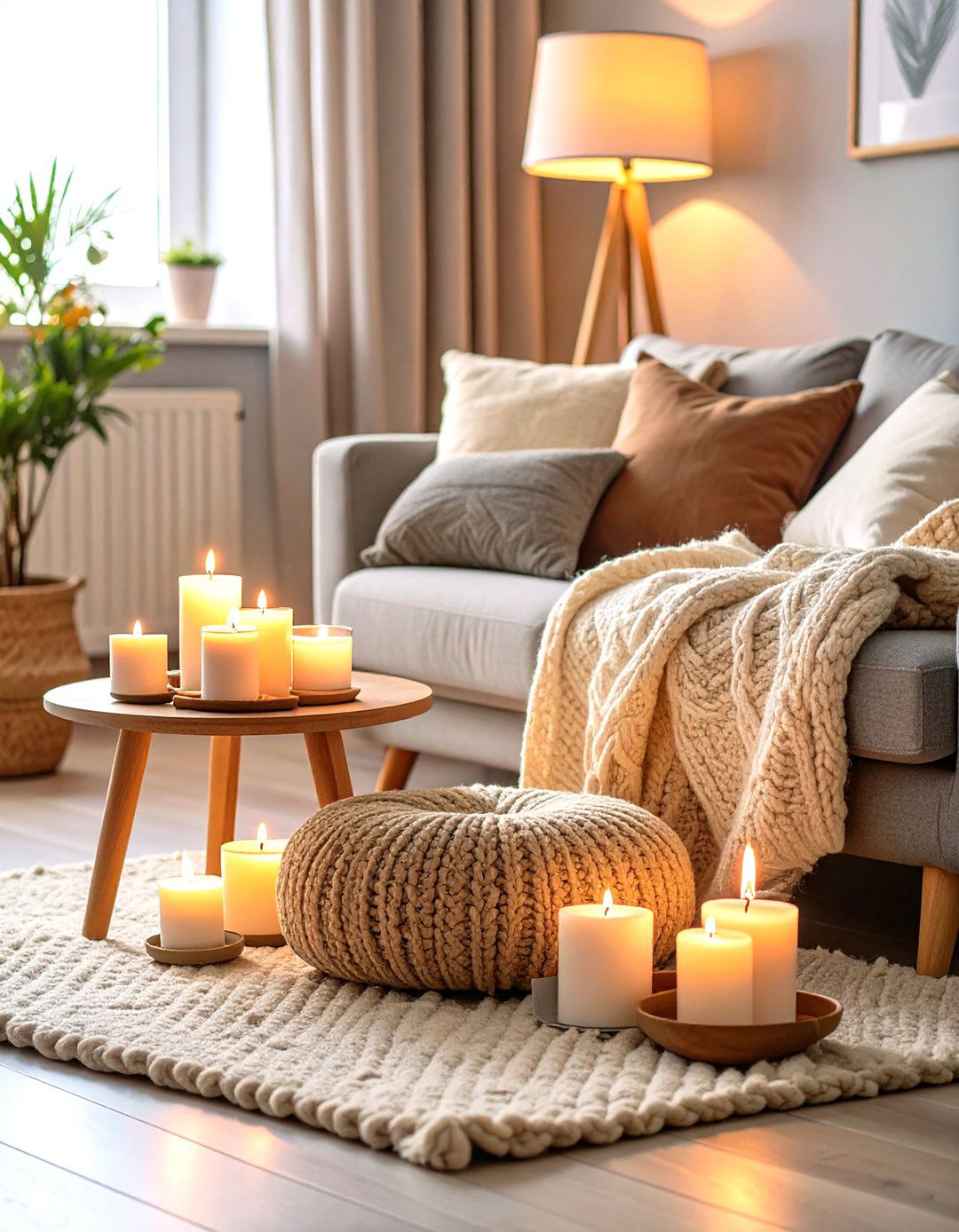
“Hygge” embodies coziness and contentment. In living rooms, this translates to layers of soft lighting—candles, floor lamps, and pendant lights with dimmers—to foster a warm ambiance. Personal touches like a stack of your favorite books, a basket of knitting supplies, or scented candles complete the inviting scene.
8. Use Curved Silhouettes
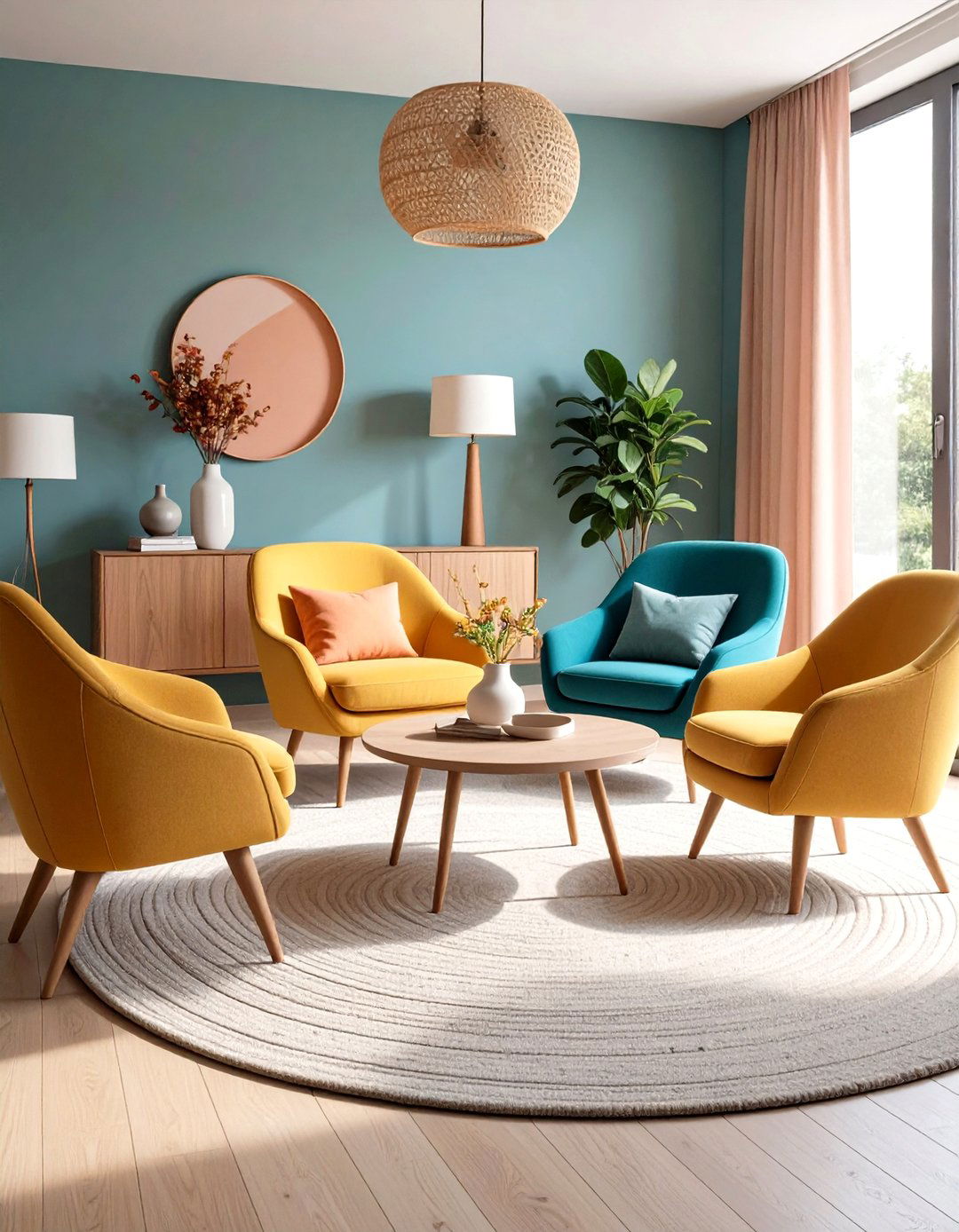
Soft, organic forms contrast beautifully with the clean lines typical of Scandinavian spaces. Curved armchairs, rounded coffee tables, or circular rugs introduce gentle dynamics without disrupting the minimal mood. This sculptural approach adds sophistication and visual flow.
9. Add a Statement Wall or Accent Color
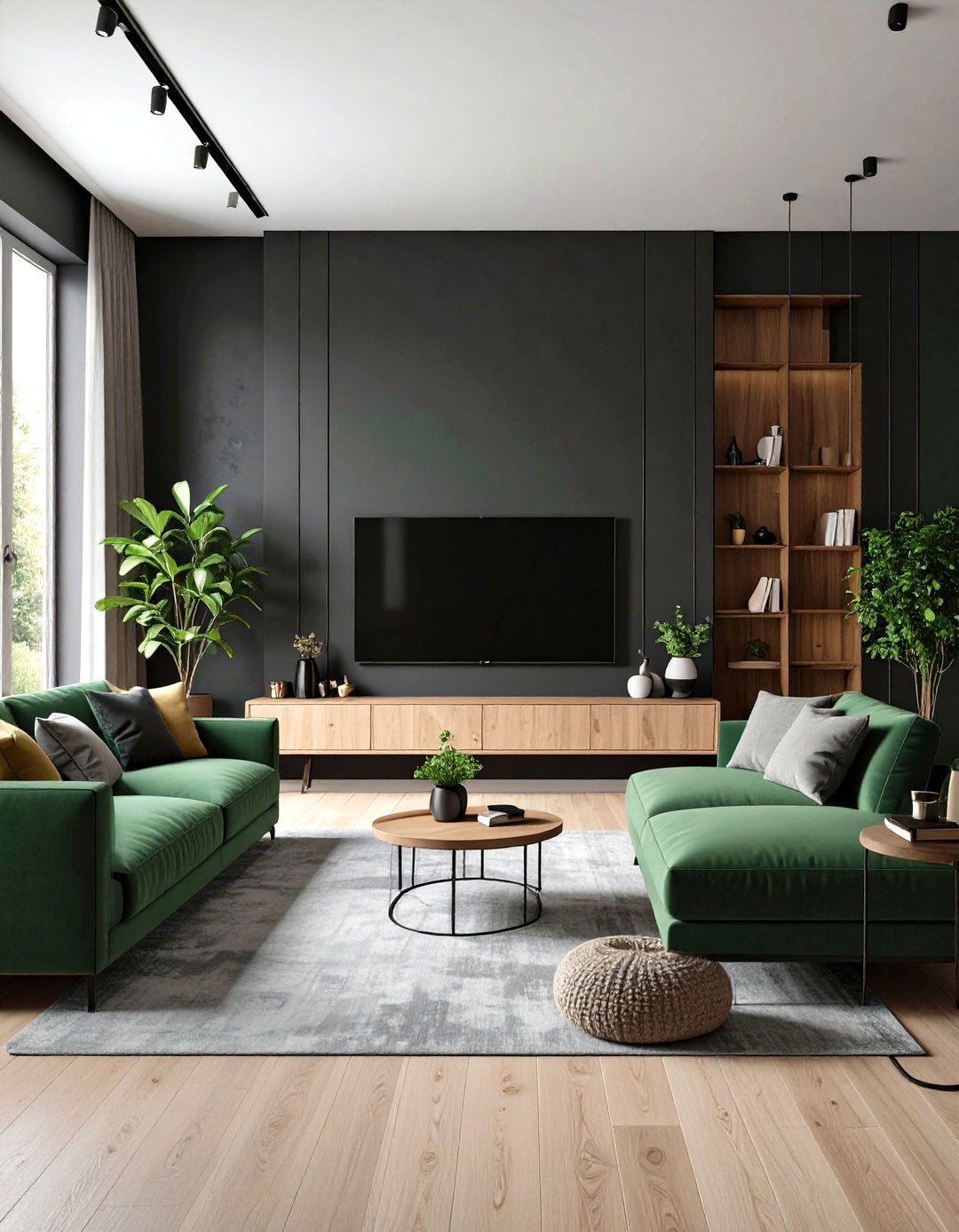
While most Scandinavian rooms rely on neutrals, a single accent wall in a muted color—such as sage green or dusty blue—can provide depth and focus. Alternatively, a black accent wall behind a media console or behind a bookshelf creates dramatic contrast and frames the room’s focal point.
10. Layer Lighting Sources
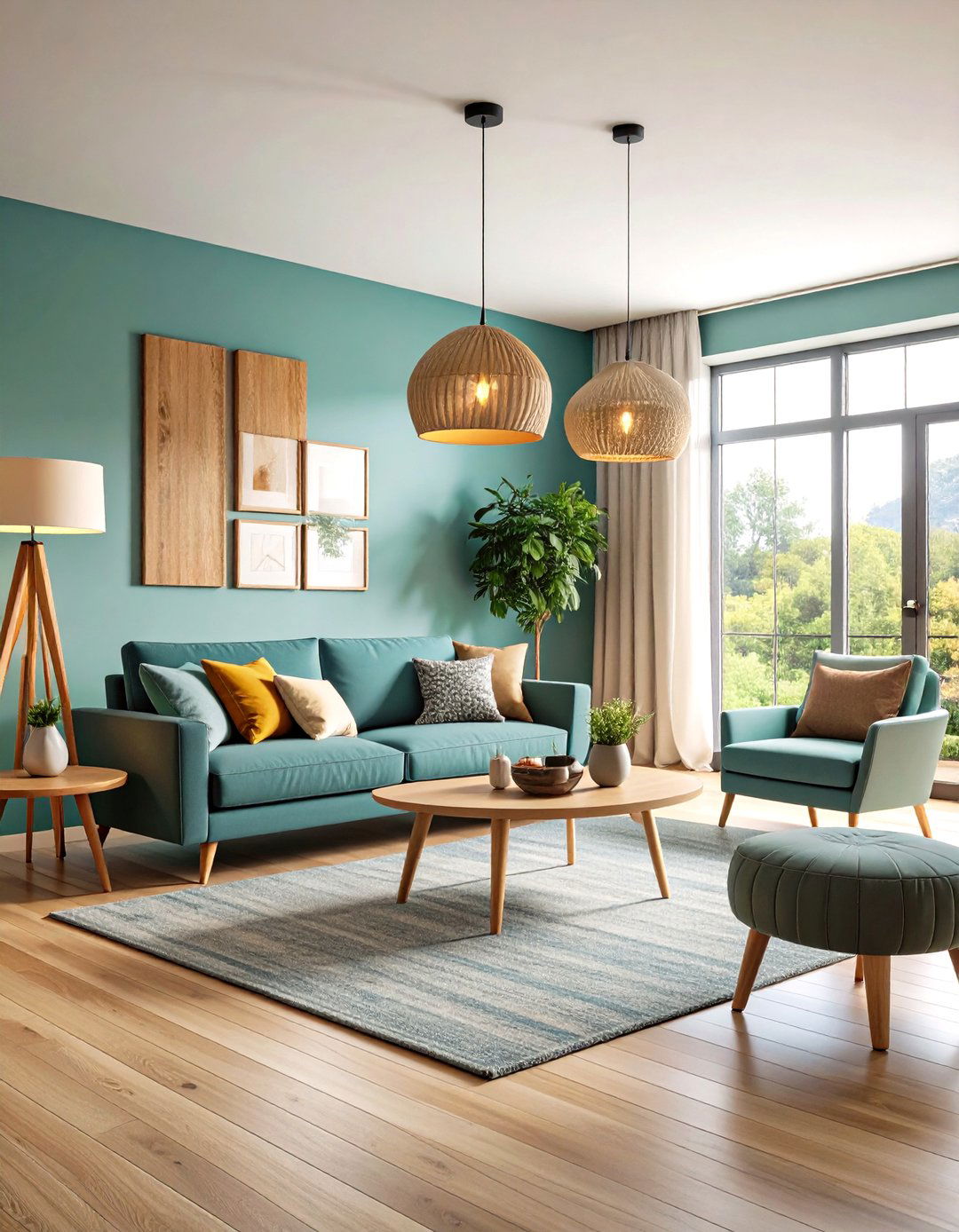
A mix of overhead fixtures, floor lamps, table lamps, and candles ensures flexibility and atmosphere. Pendant lights with simple shades, tripod floor lamps, and small side-table lamps allow you to tailor the mood to different activities—from reading to entertaining.
11. Display Minimalist Art
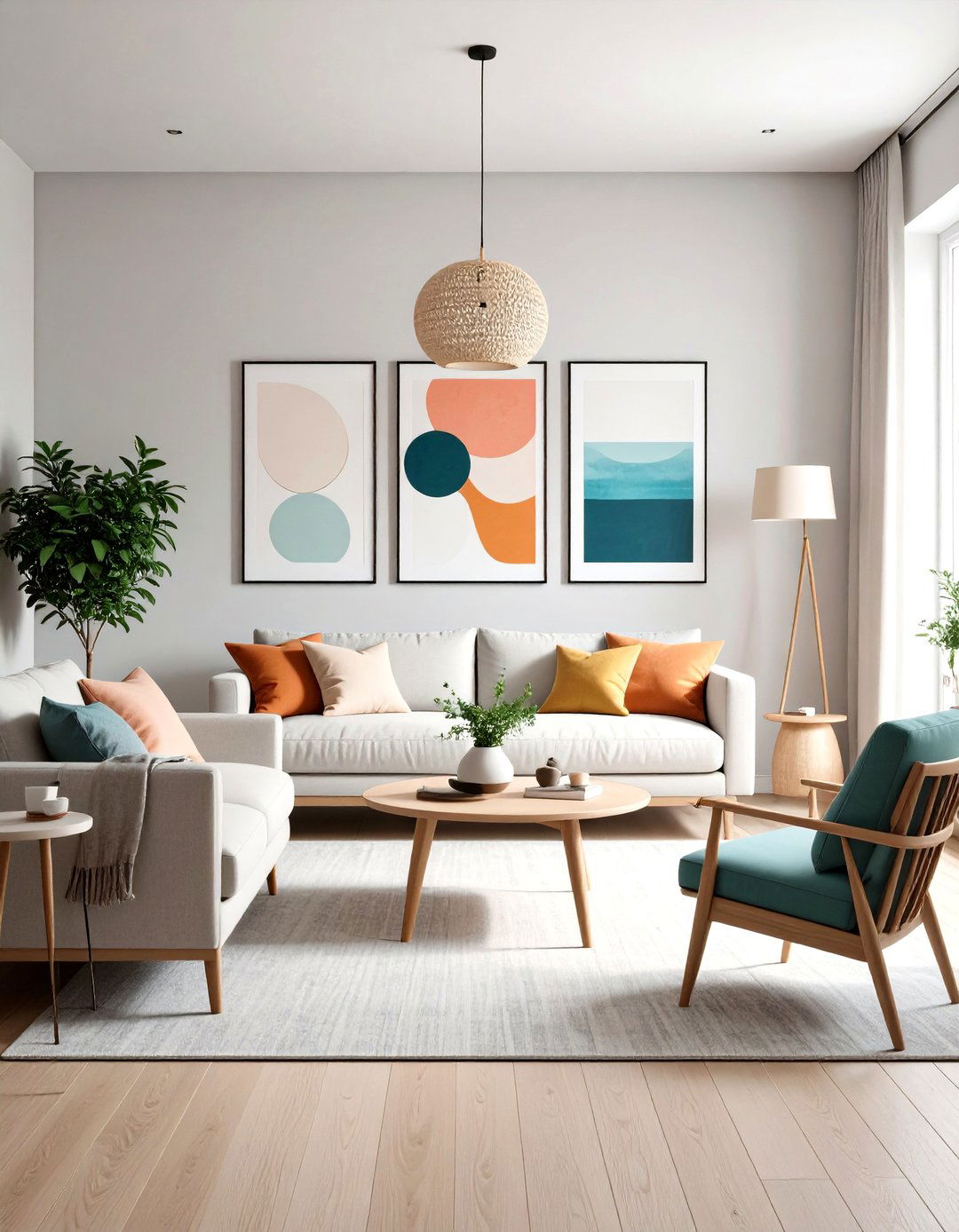
Abstract prints or line drawings in thin frames maintain the room’s airy feel while injecting personality. Select one or two pieces rather than overcrowding walls, and consider leaning art on shelves for a relaxed look.
12. Opt for Open, Floating Shelving

Floating shelves keep floors clear and reinforce the minimalist aesthetic. Display a curated selection of objects—like ceramics, small plants, and a few books—to avoid clutter and maintain balance.
13. Mix in Vintage or Retro Finds
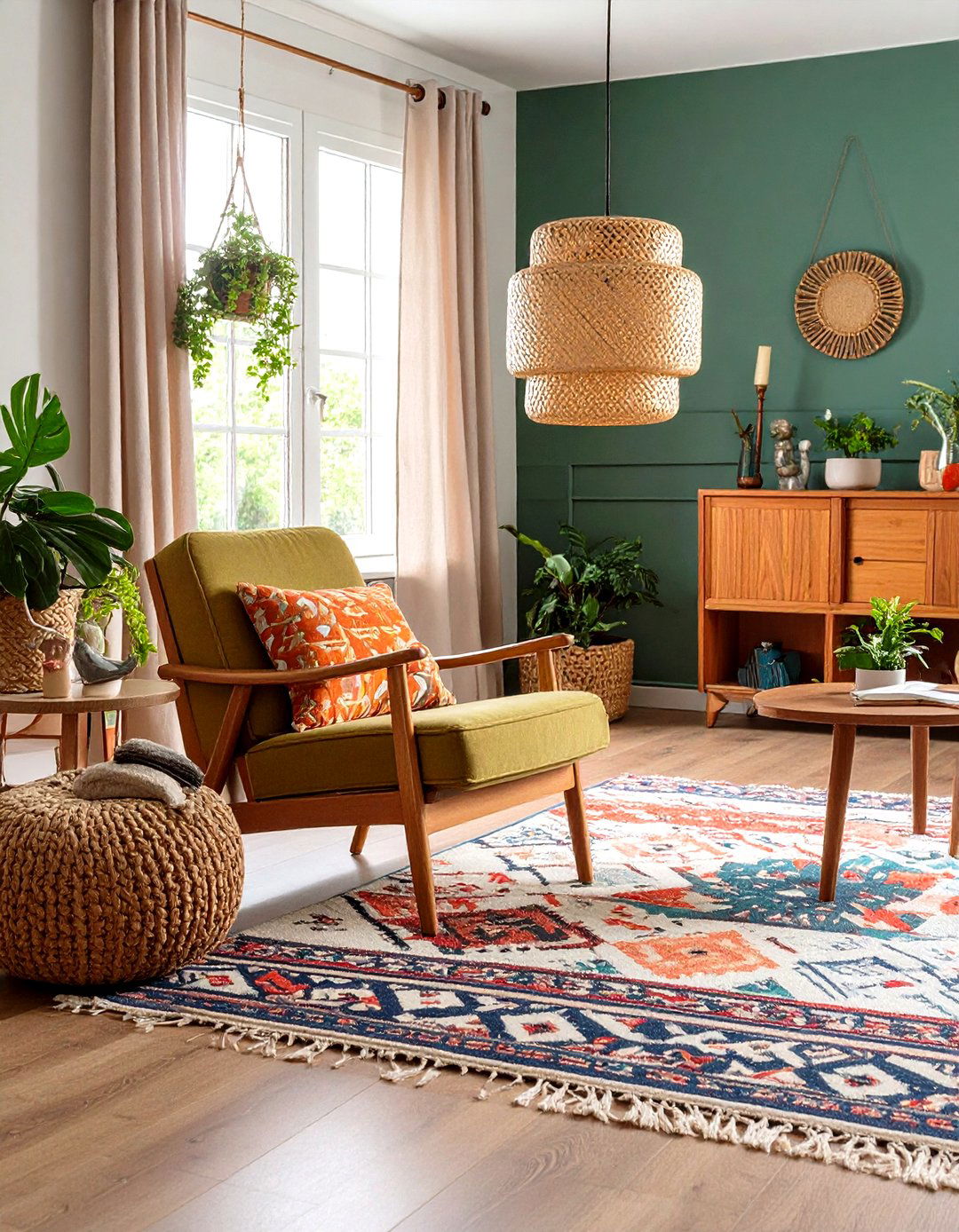
A mid-century modern chair or a vintage rug adds character and a sense of history. Selecting one or two well-chosen vintage pieces prevents the space from feeling too uniform and underscores the Scandinavian appreciation for timeless design.
14. Emphasize Monochromatic Schemes
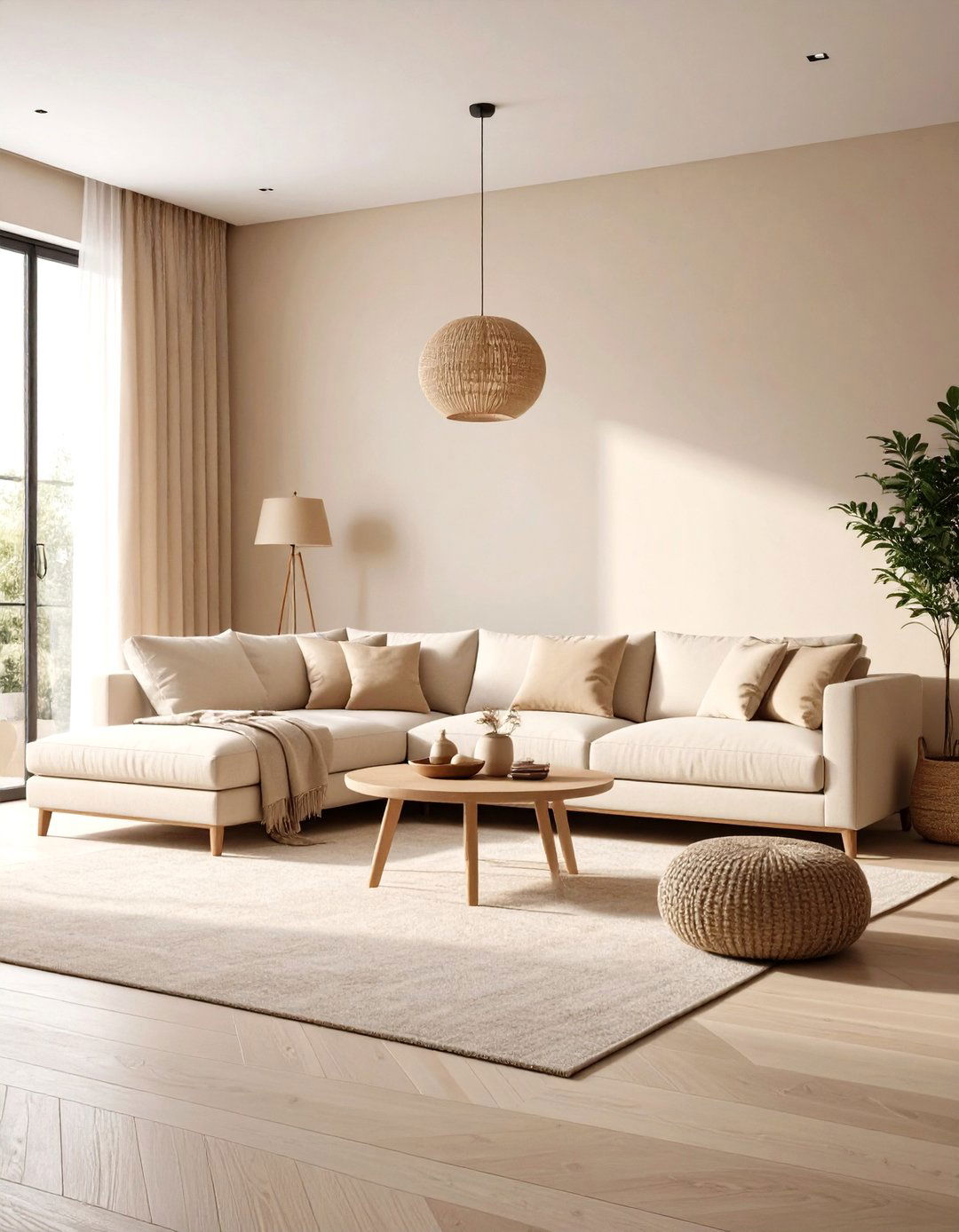
Tonal layering—using various shades of a single color—creates harmony. For instance, pairing ivory walls with cream upholstery and a beige rug yields a rich, cohesive canvas that highlights texture.
15. Choose Sustainable, Durable Materials
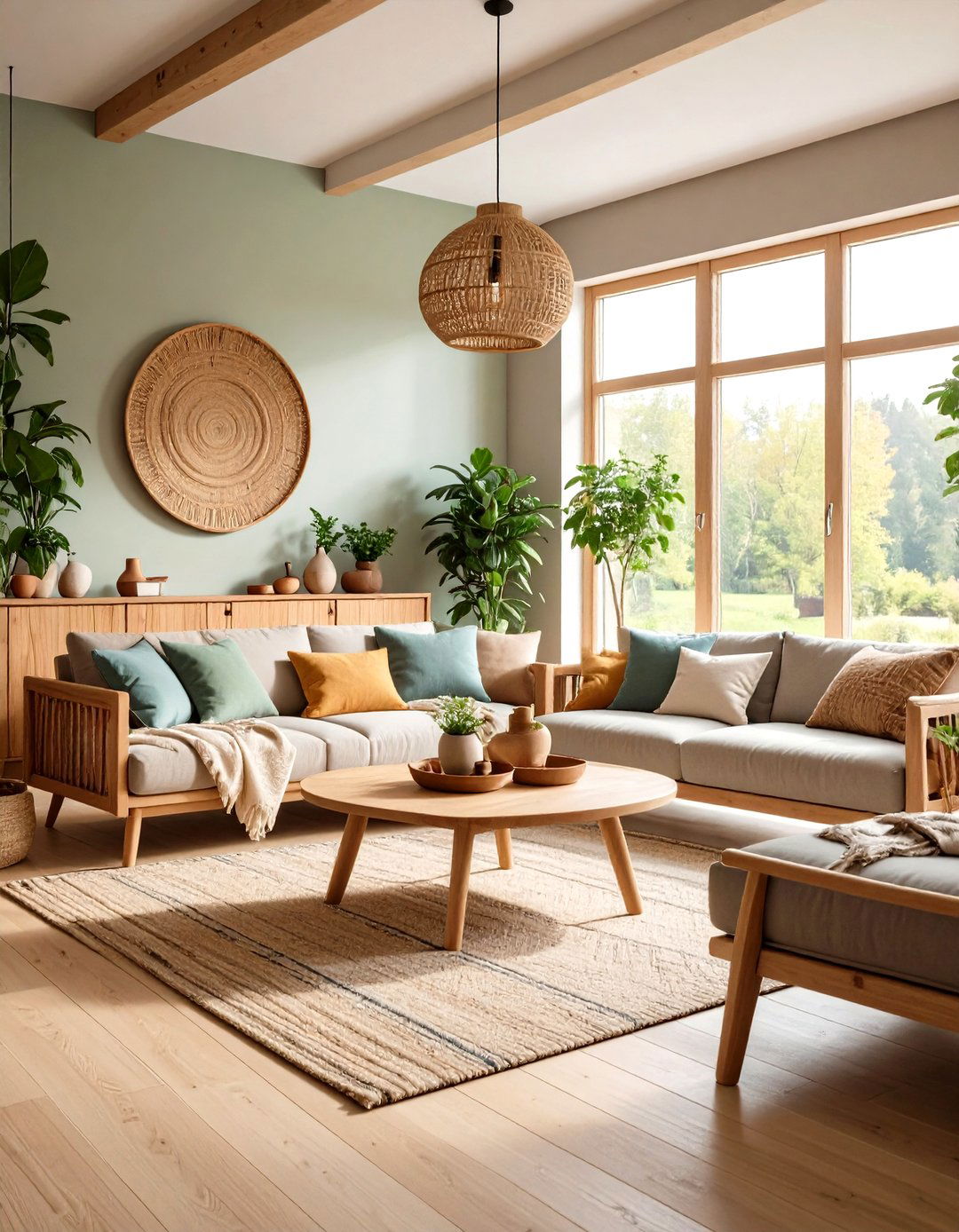
Scandinavian interiors champion longevity. Opt for solid wood furniture, natural fiber textiles, and responsibly sourced decor items to align with the region’s eco-conscious values.
16. Integrate Smart Storage Solutions
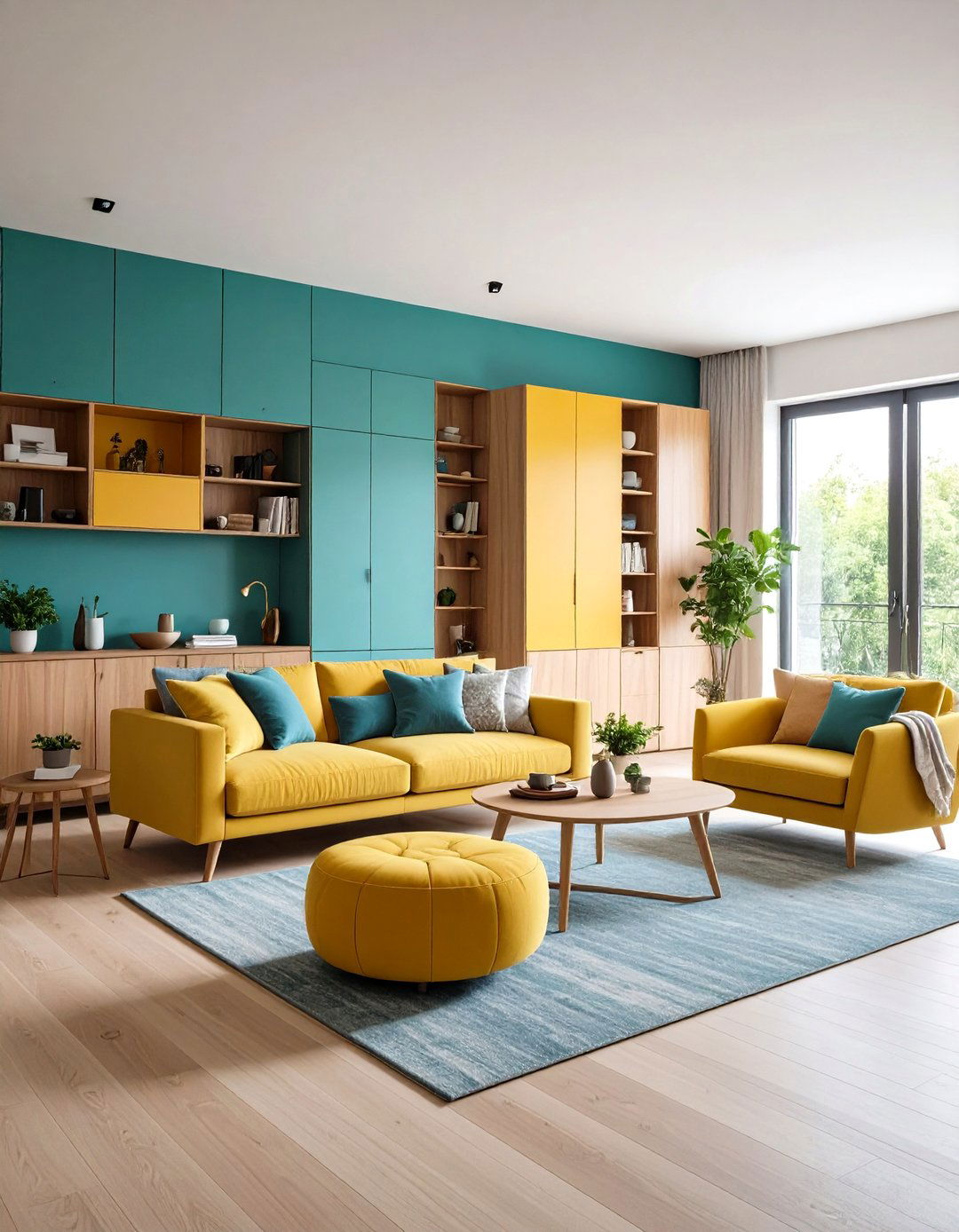
Built-in cabinets, concealed storage ottomans, and multifunctional sideboards help hide everyday clutter—magazines, remotes, or throws—keeping the living room serene.
17. Personalize with Meaningful Objects
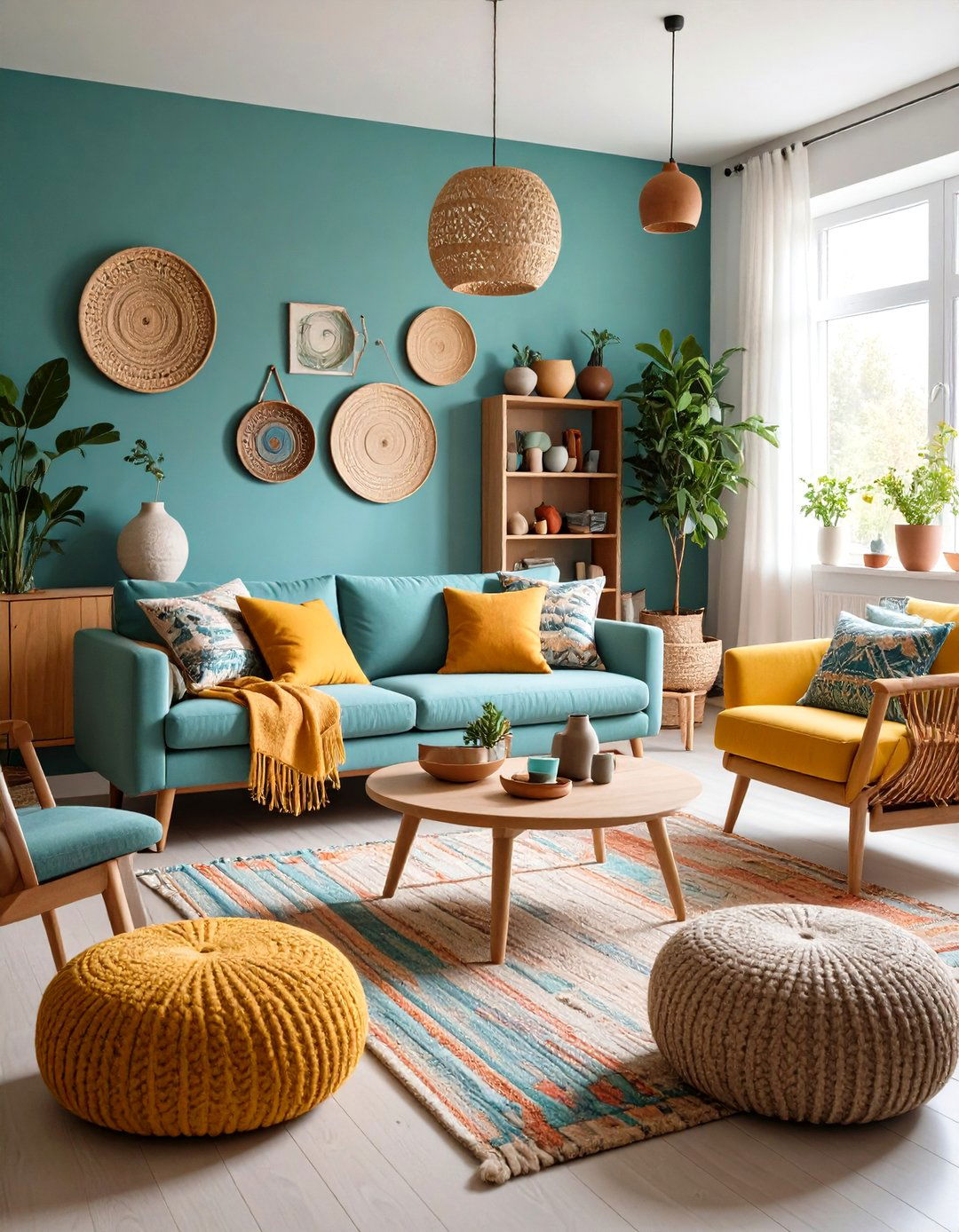
Avoid generic mass-produced décor; instead, display handmade ceramics, travel souvenirs, or family photos. This careful curation adds warmth and tells your story without overcrowding.
18. Incorporate Subtle Metallic Accents
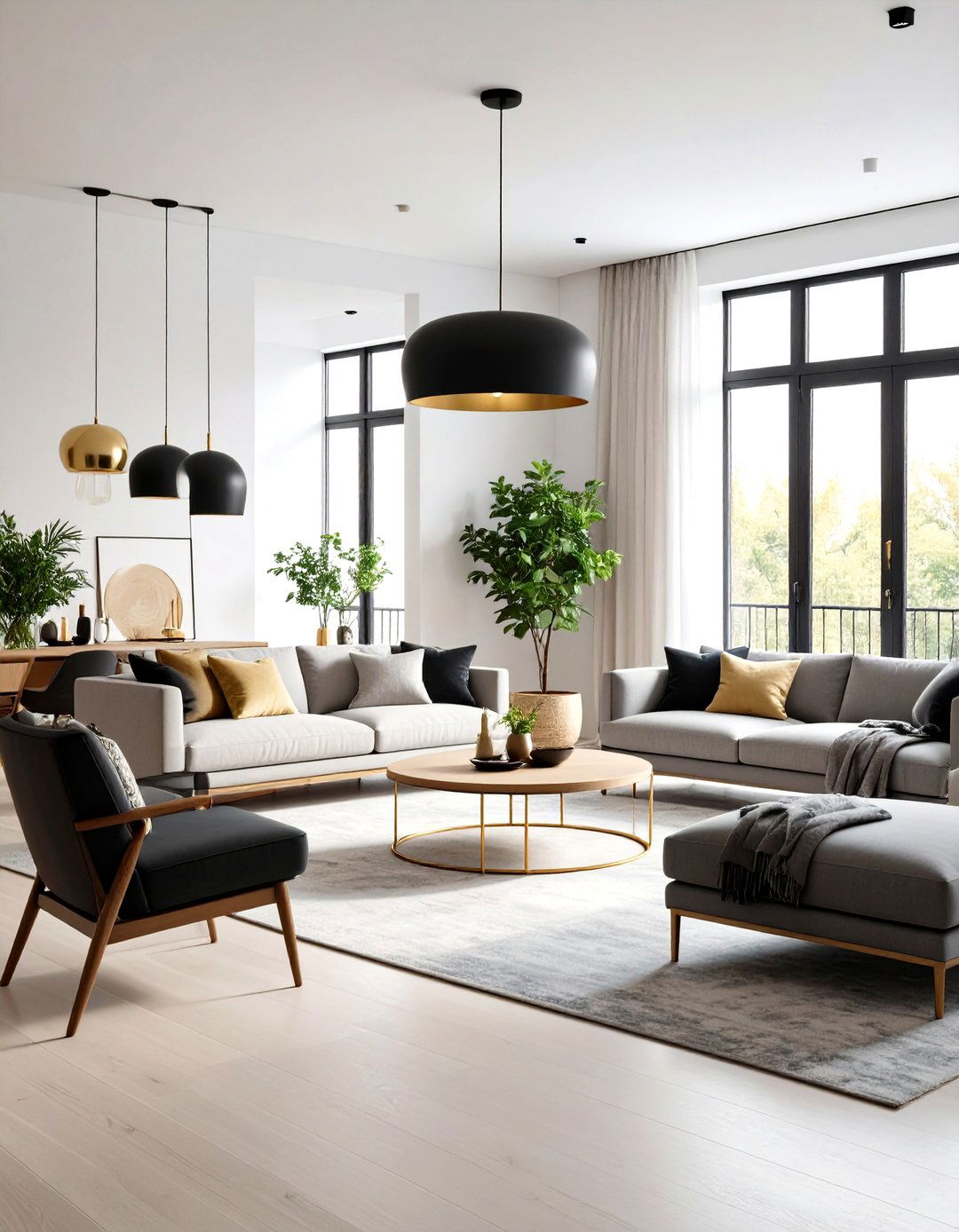
Brushed brass or matte black hardware on cabinets, light fixtures, or decorative objects adds a contemporary edge and reflects light, enhancing visual interest.
19. Blend Indoor and Outdoor Textures
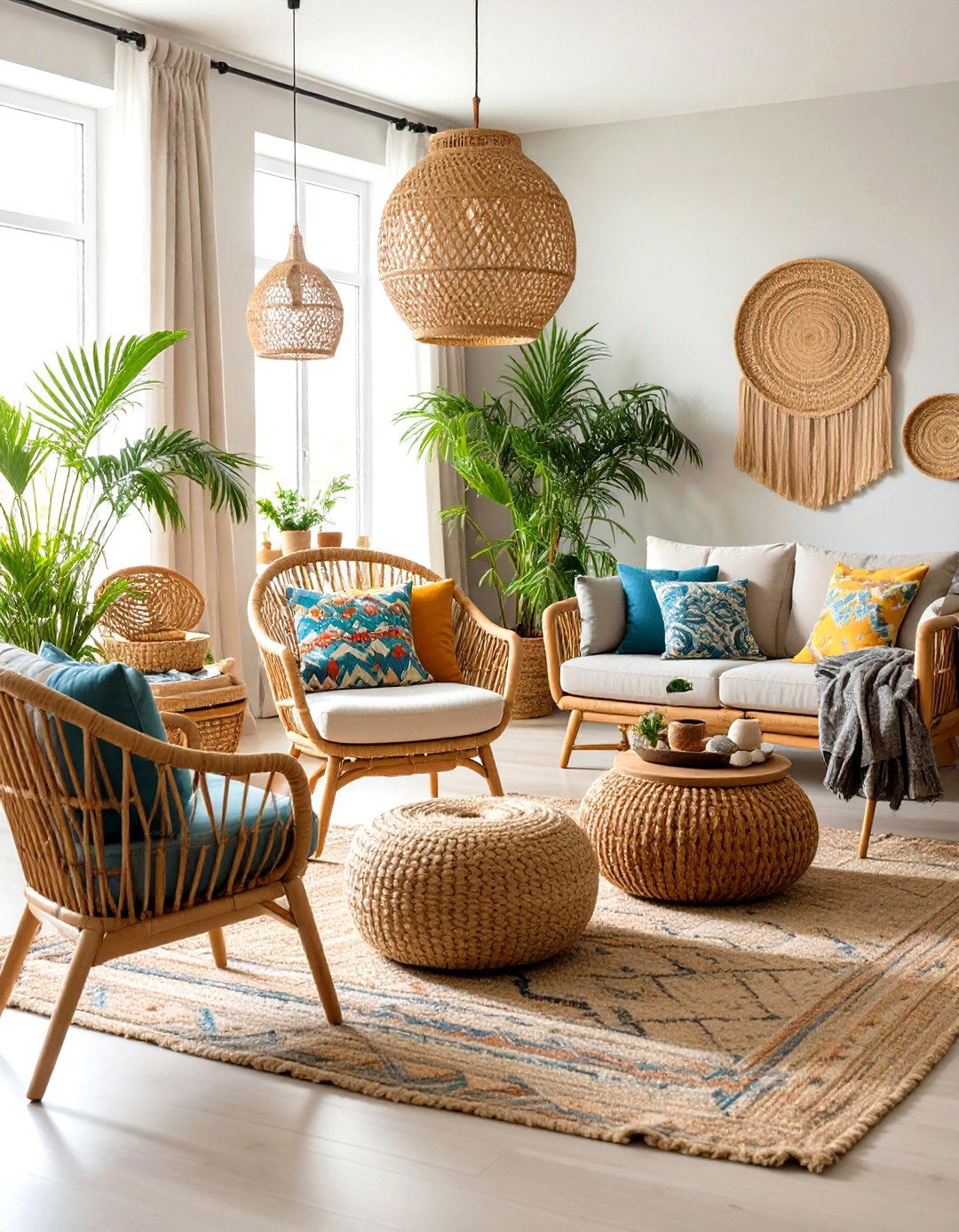
Wicker baskets, rattan chairs, or jute rugs introduce an earthy feel that bridges interior comfort with outdoor elements—reinforcing the Scandinavian connection to nature.
20. Maintain a Sense of Balance
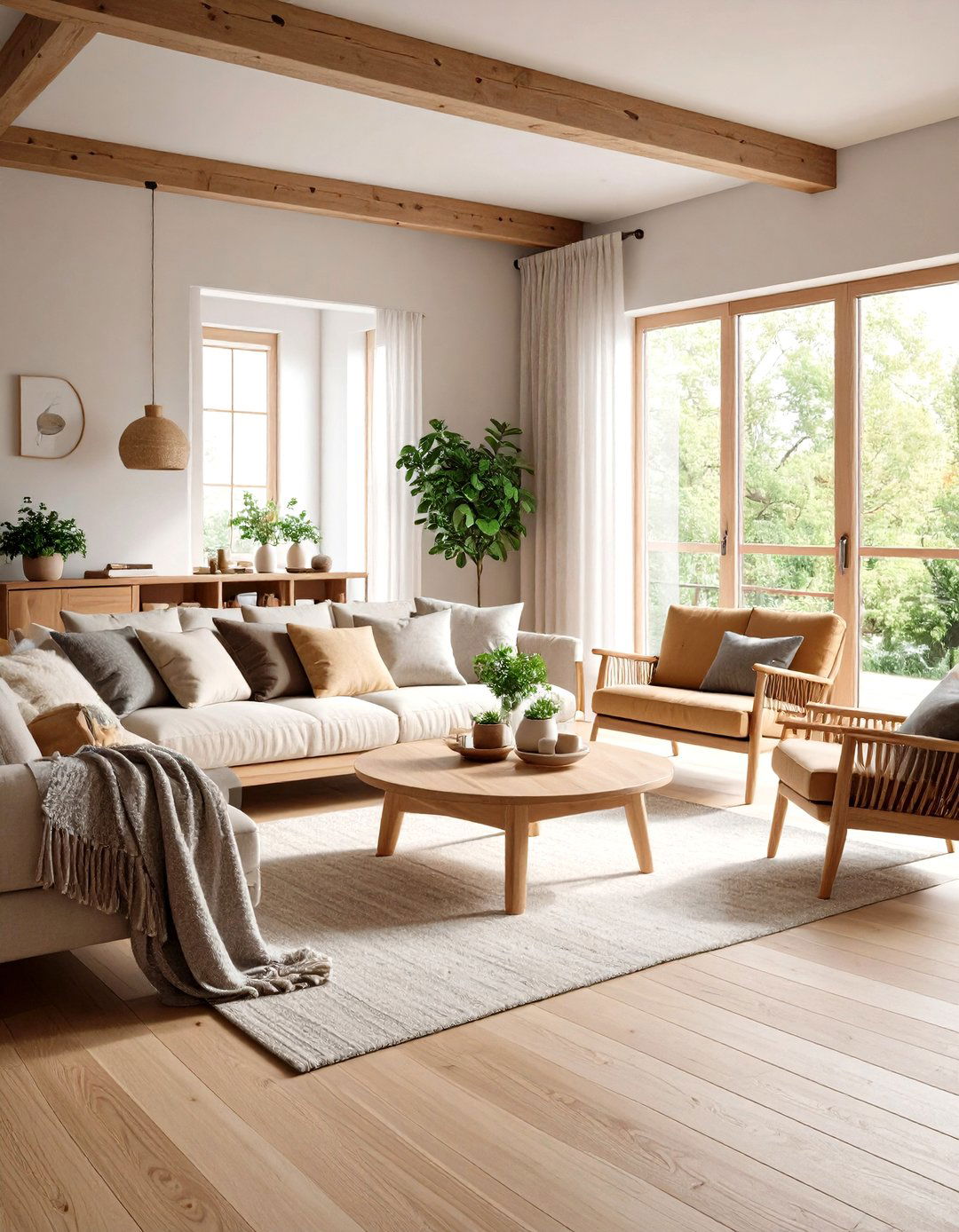
Ultimately, the strength of Scandinavian design lies in equilibrium: pairing minimalism with warmth, functionality with aesthetics, and clean lines with organic textures. By thoughtfully combining these aspects, you create a living room that is both stylish and supremely livable.
Conclusion:
Scandinavian living rooms achieve their inviting appeal through a careful interplay of neutral palettes, natural materials, abundant light, and textural layering. Emphasizing functionality and quality craftsmanship, while infusing warmth through hygge-inspired touches and personal accents, ensures a space that is both serene and engaging. By integrating these twenty ideas, you can craft a living room that reflects the timeless elegance and cozy simplicity of Nordic design.


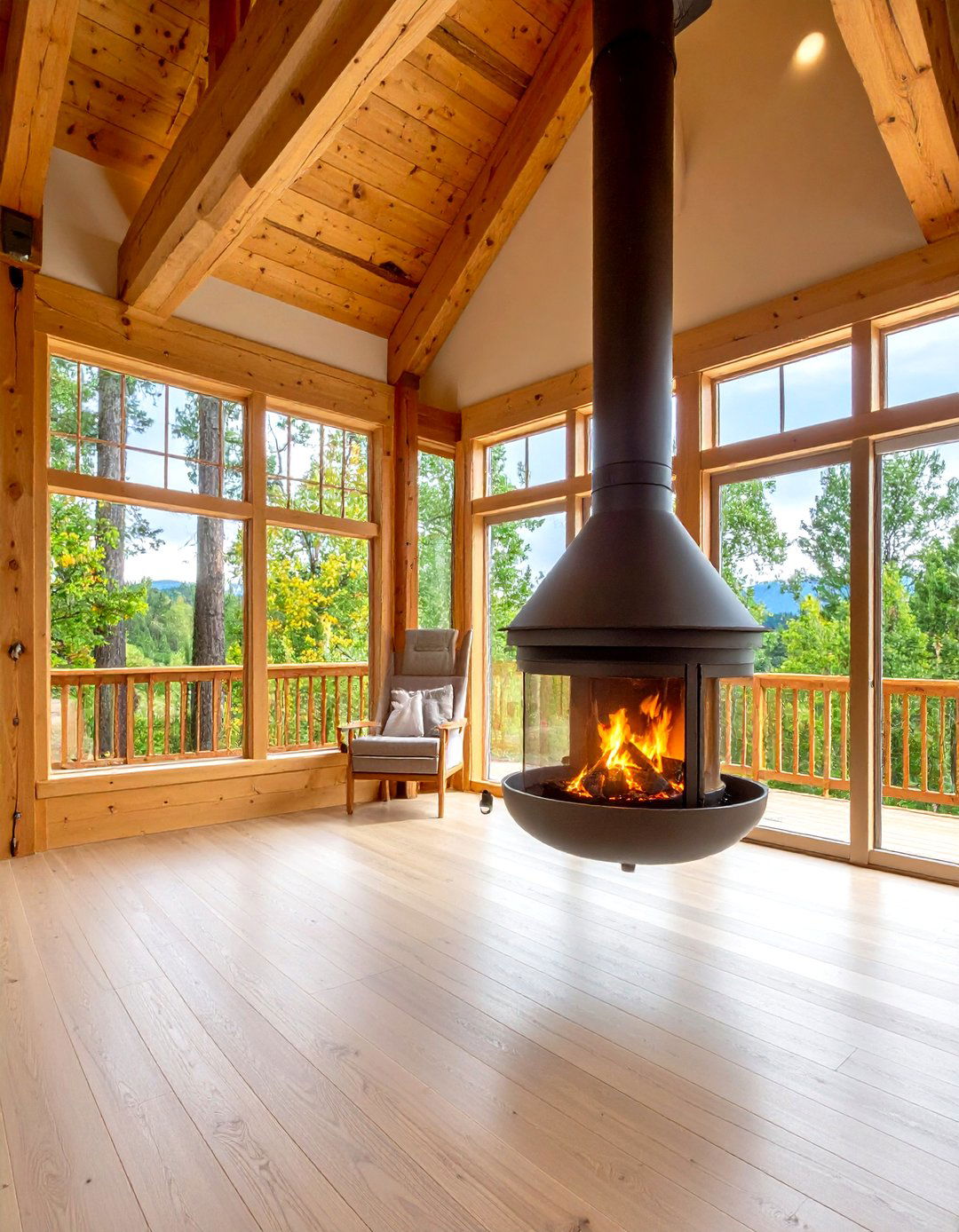
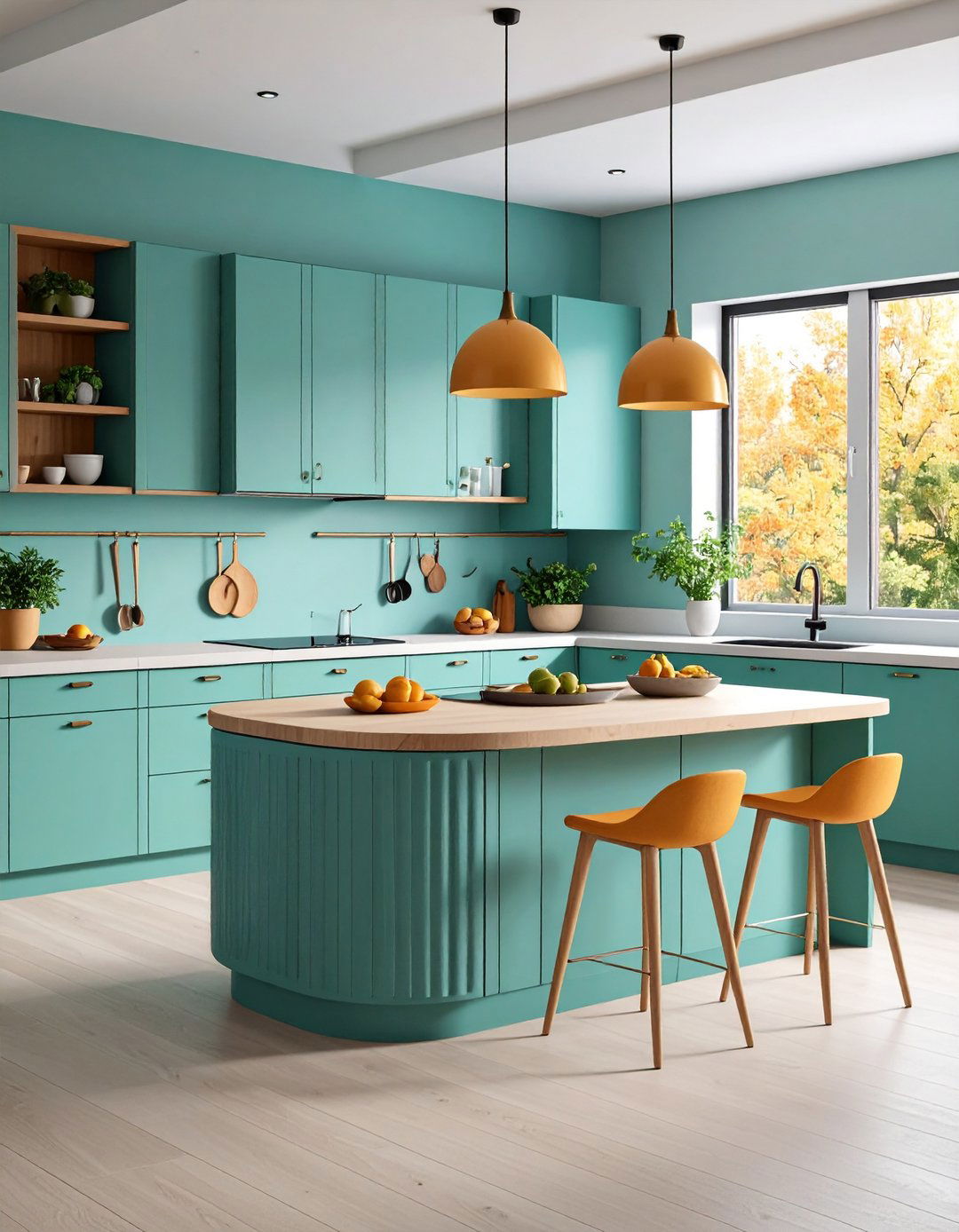
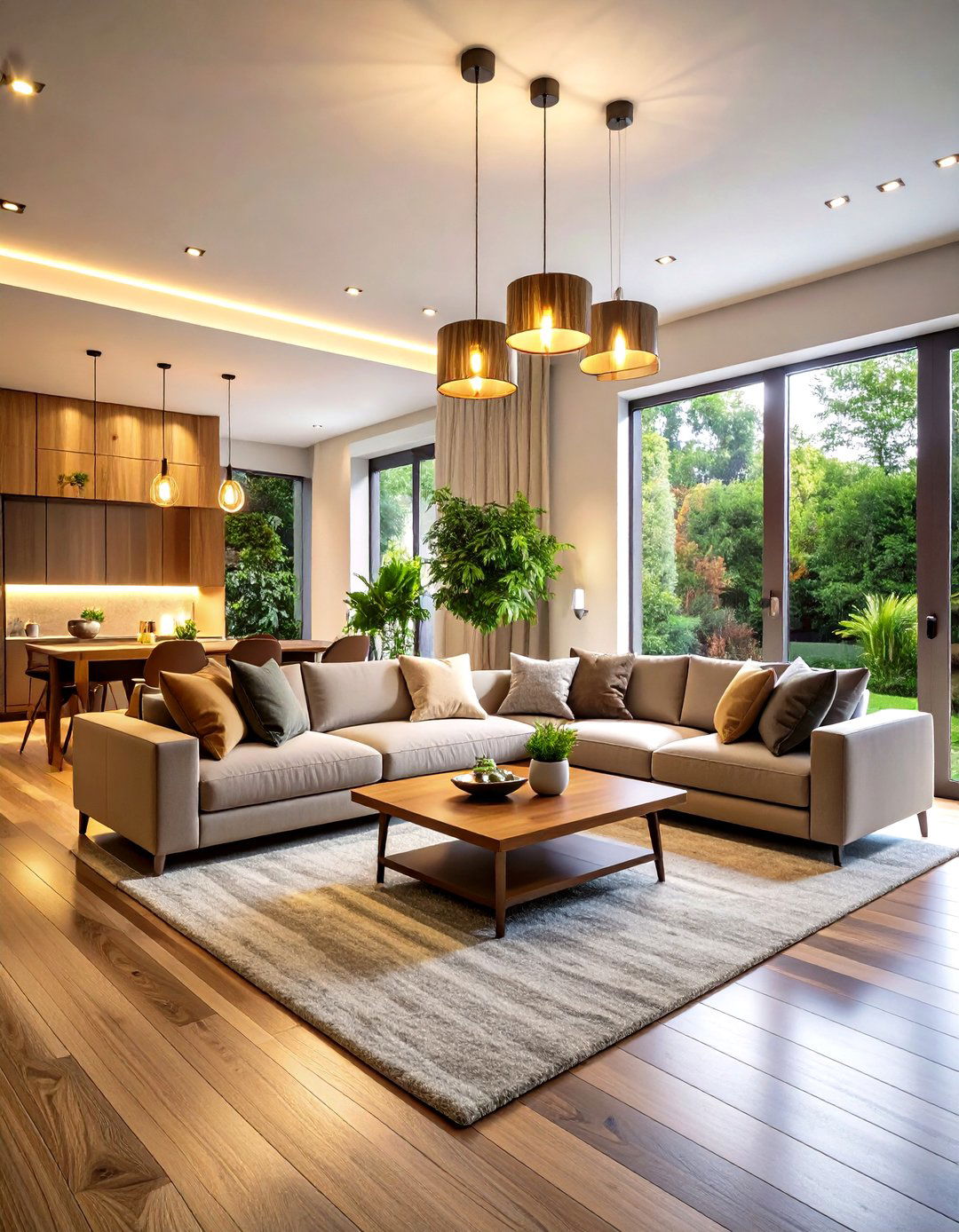
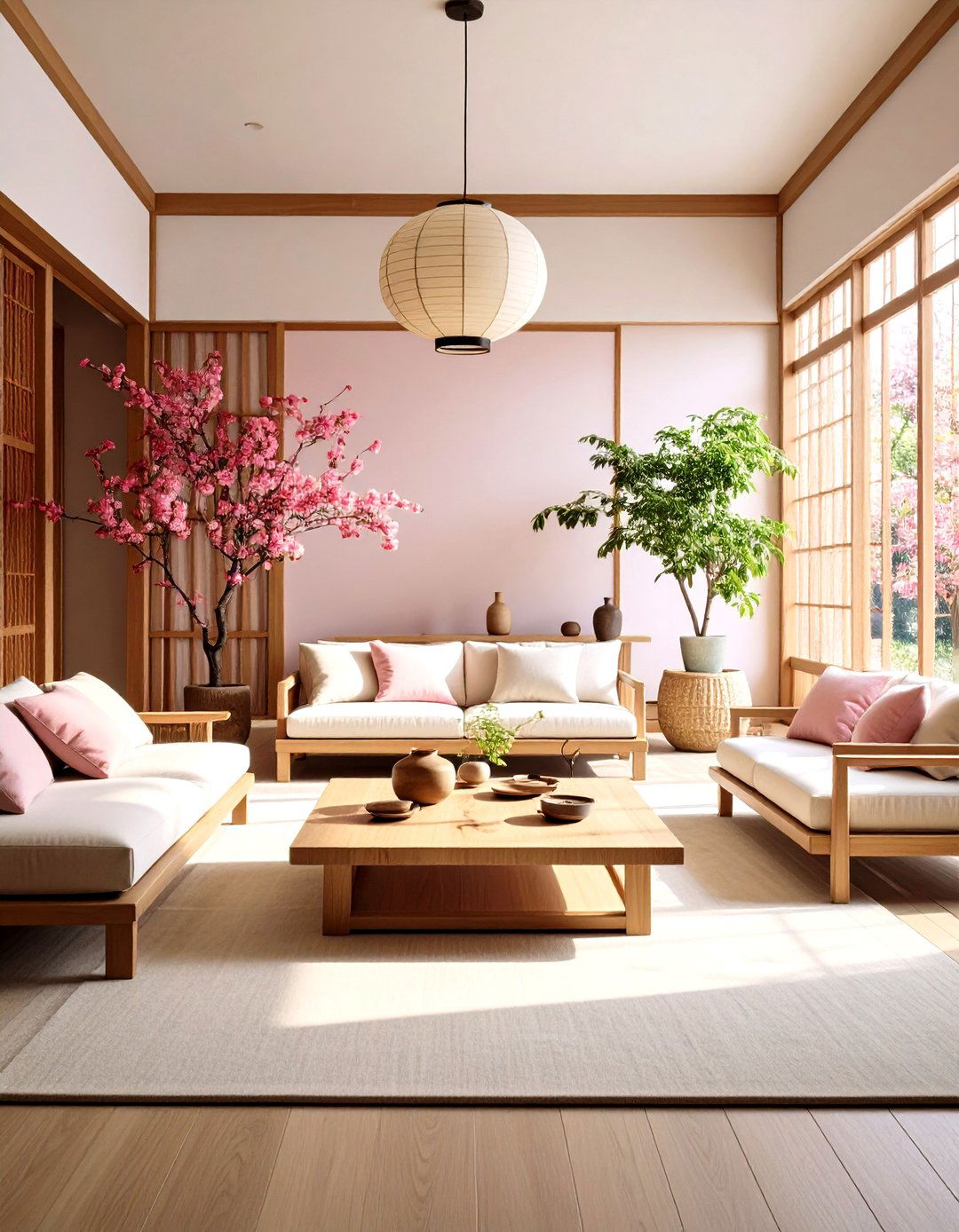
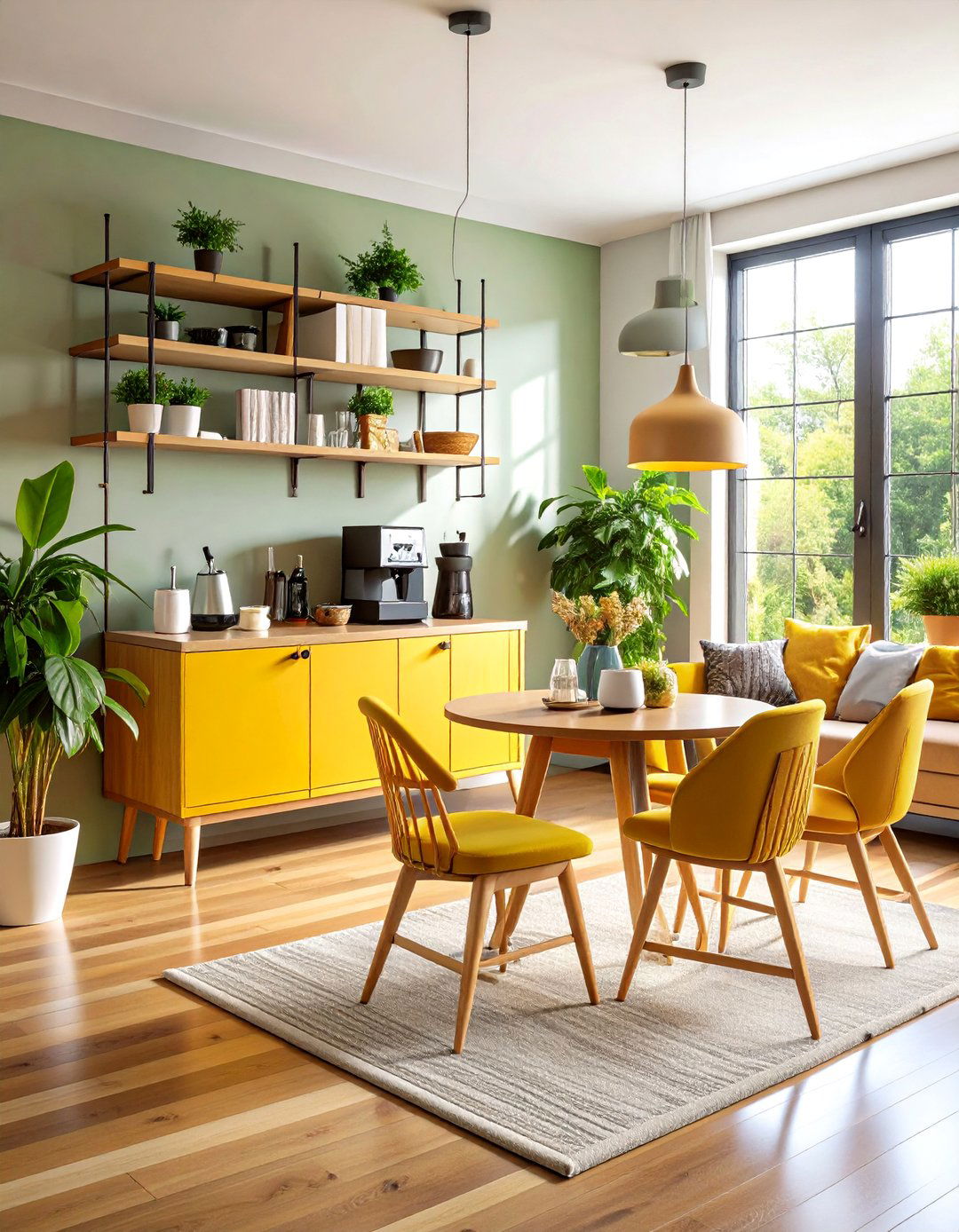


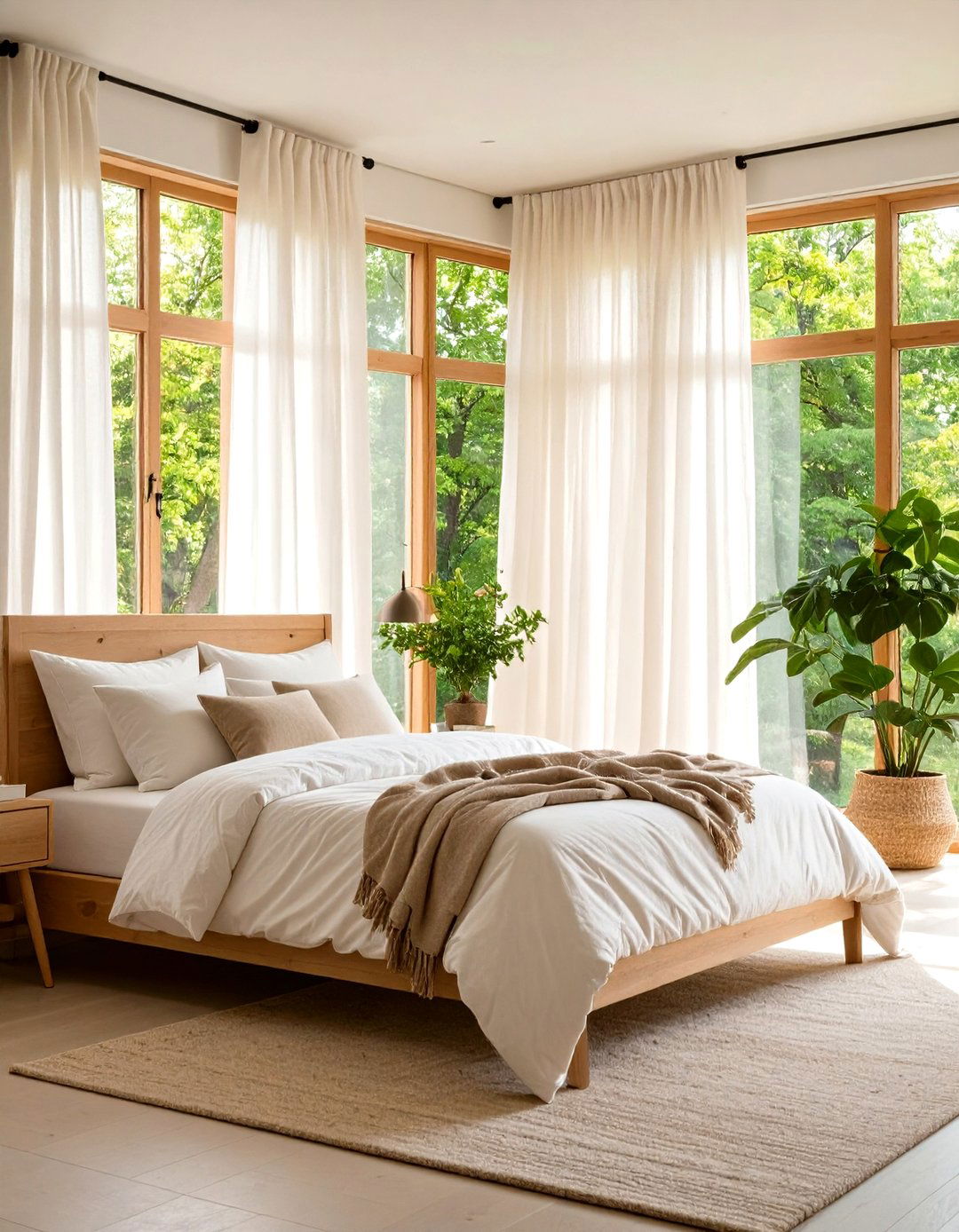
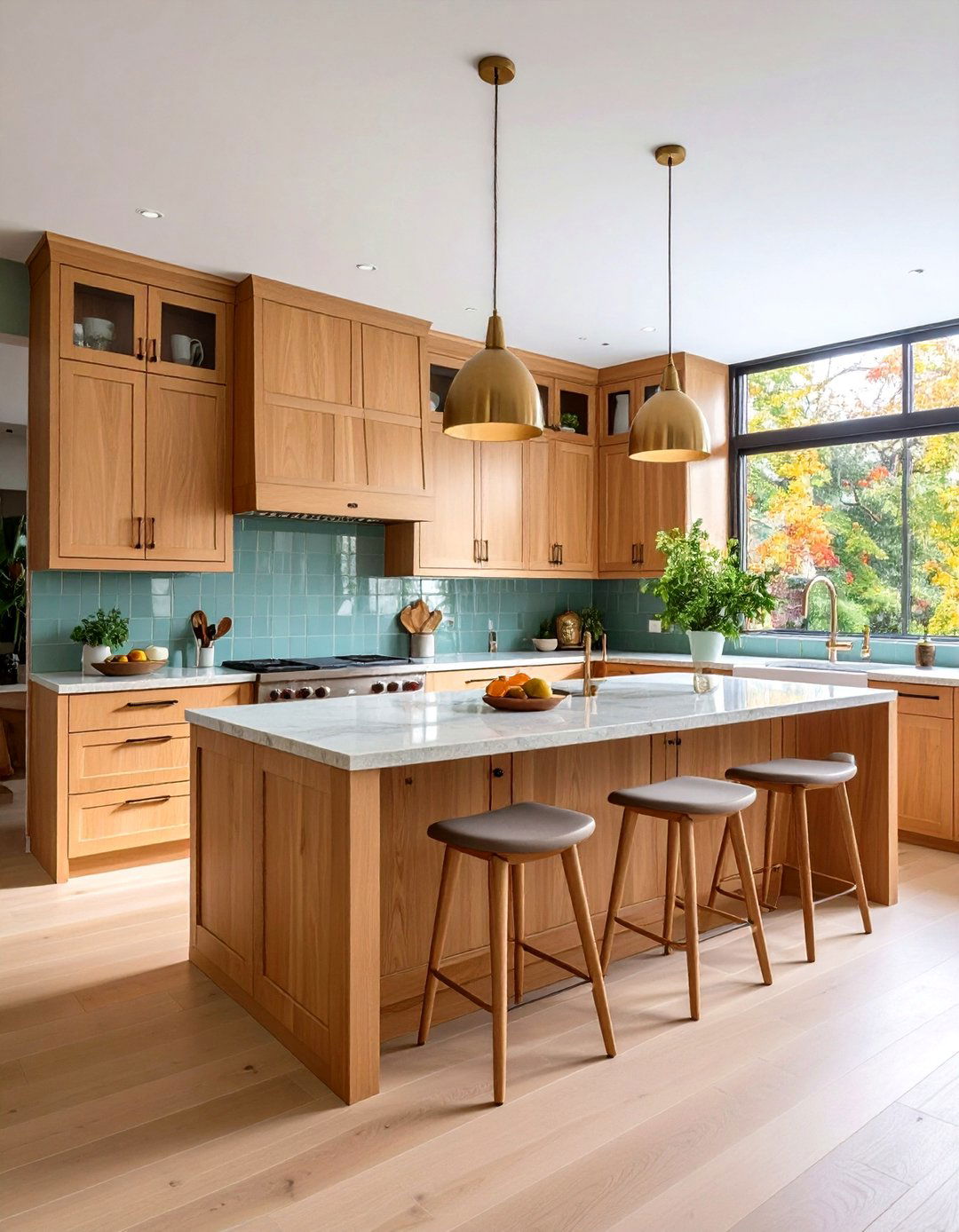

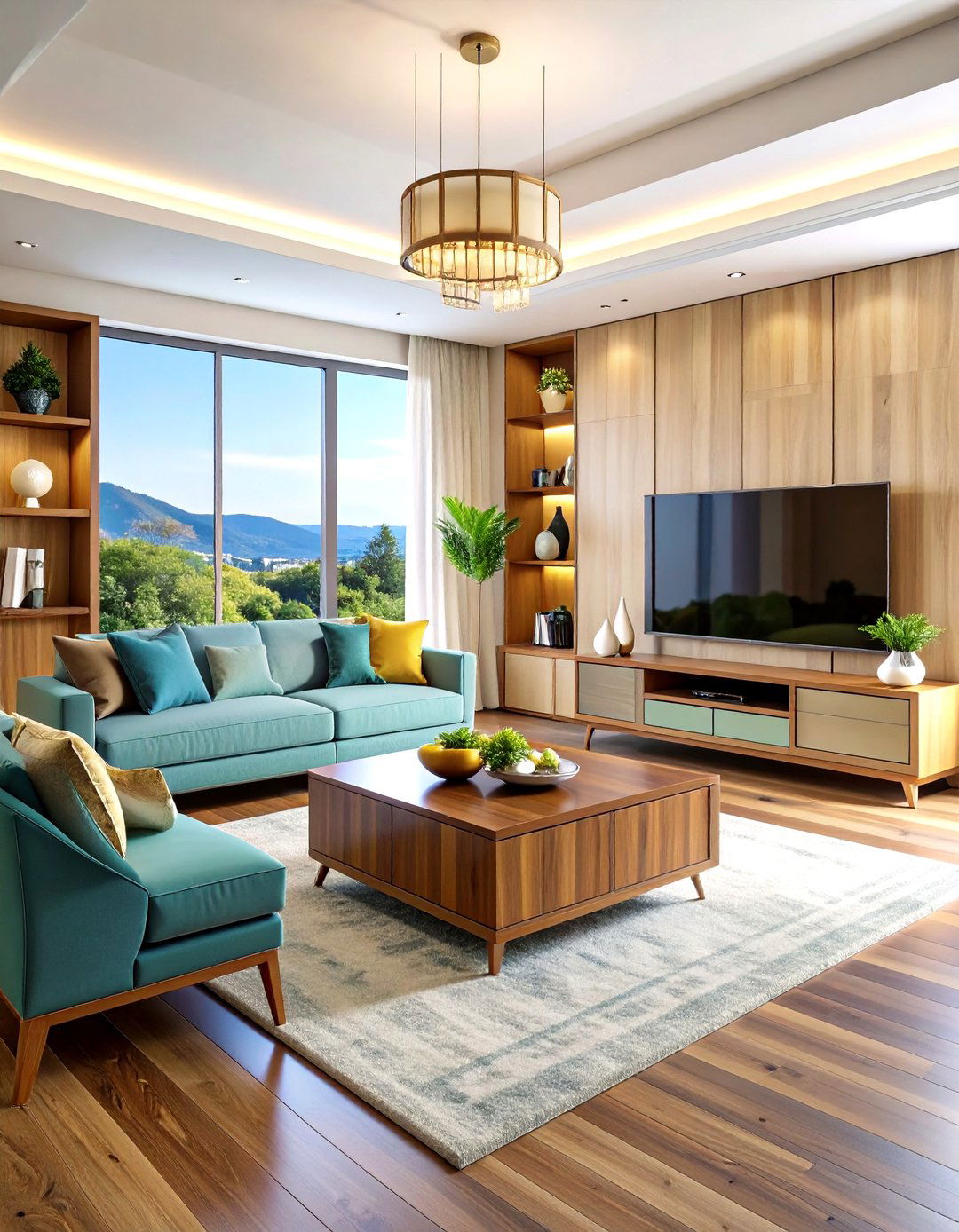
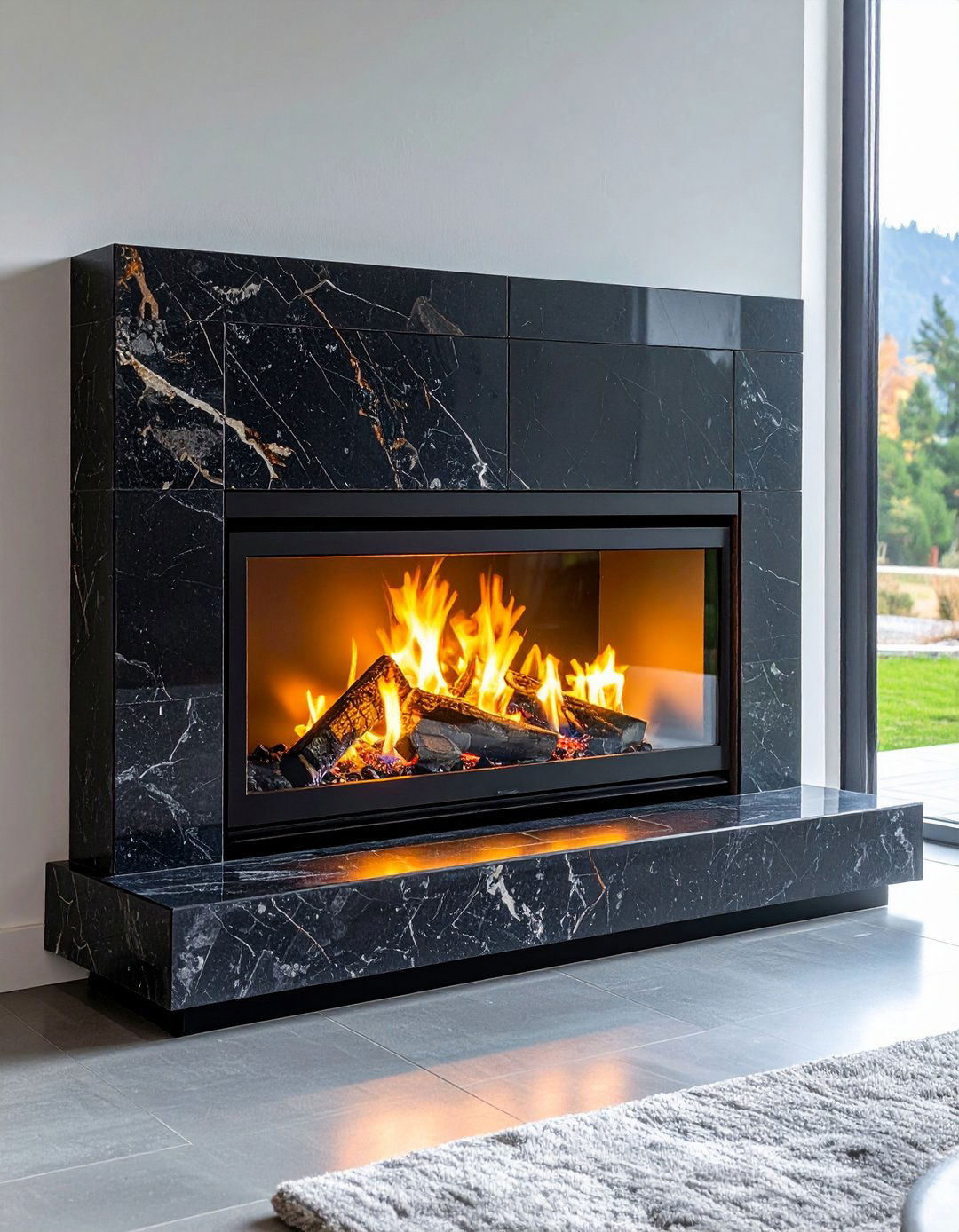
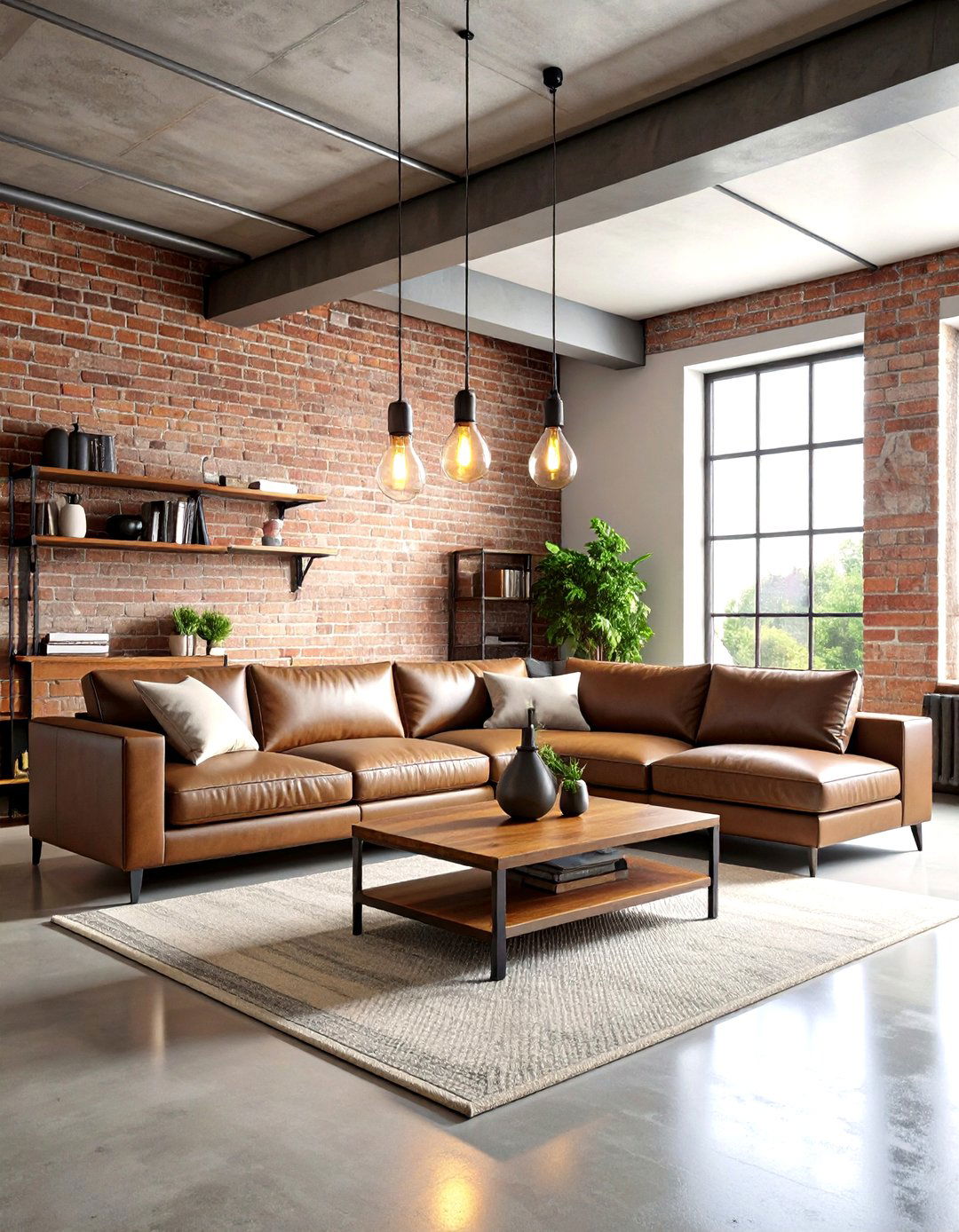
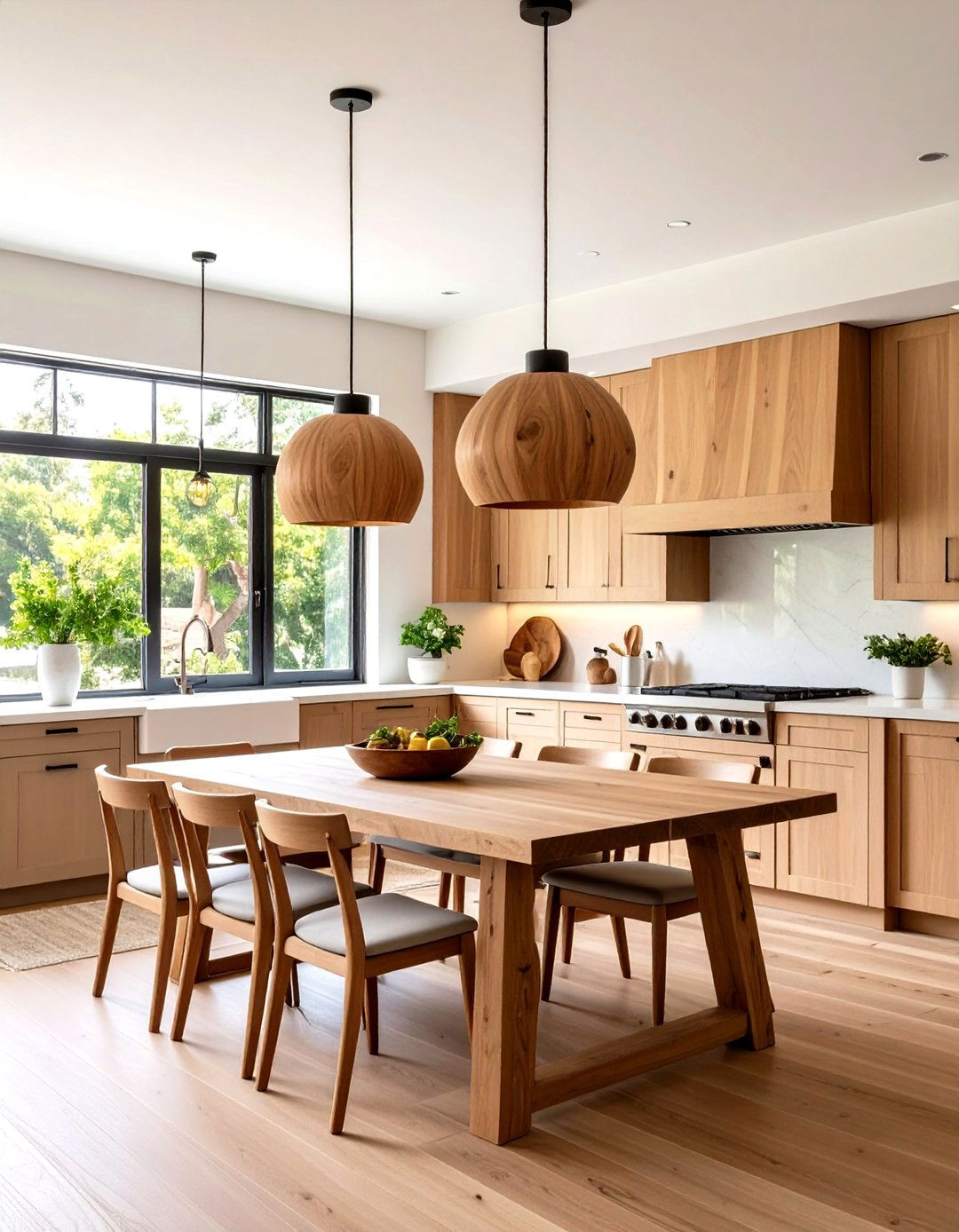
Leave a Reply